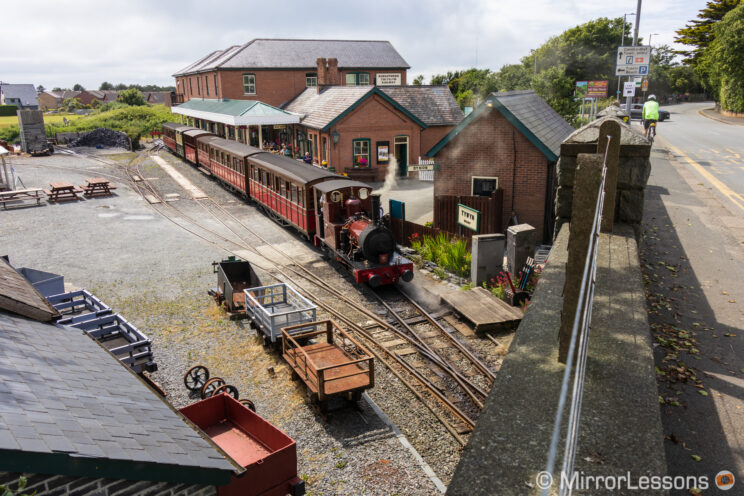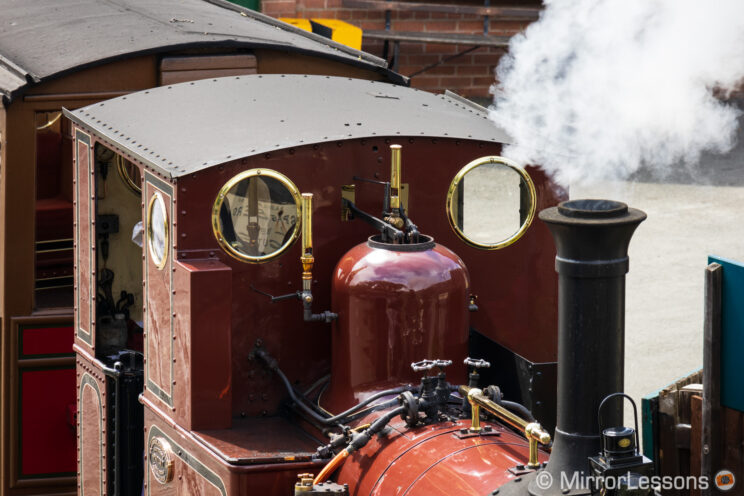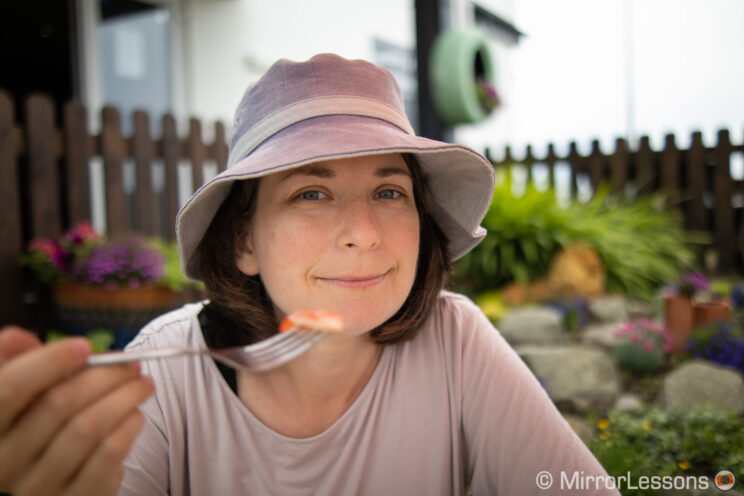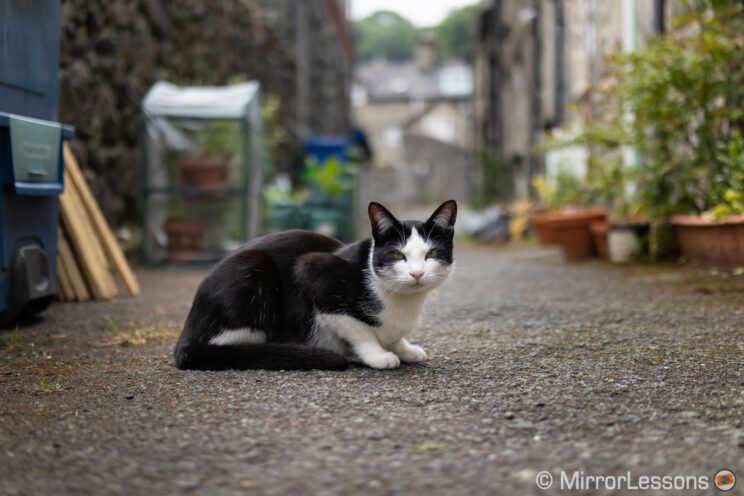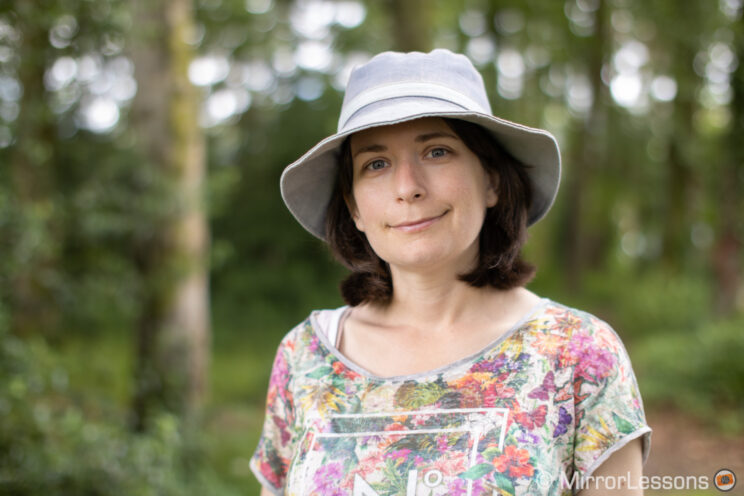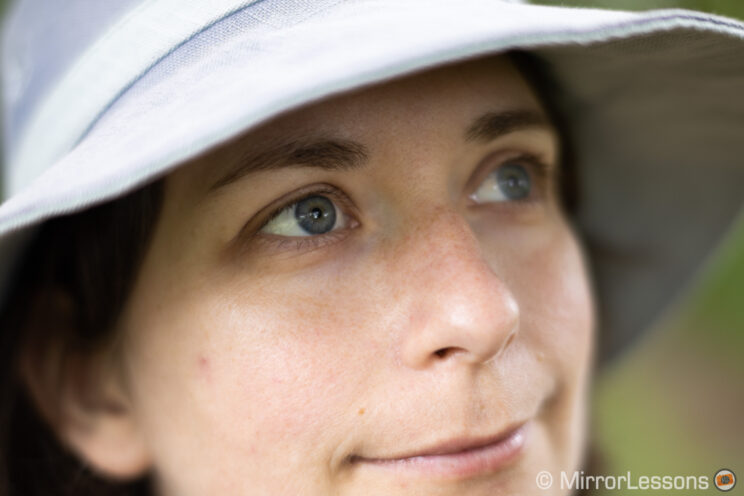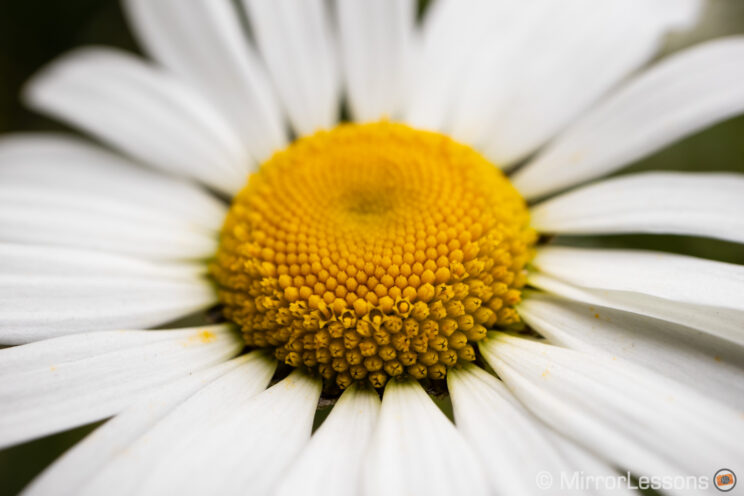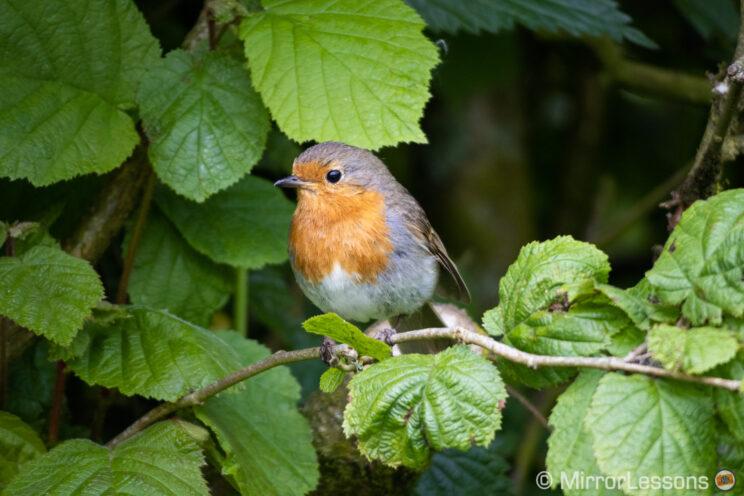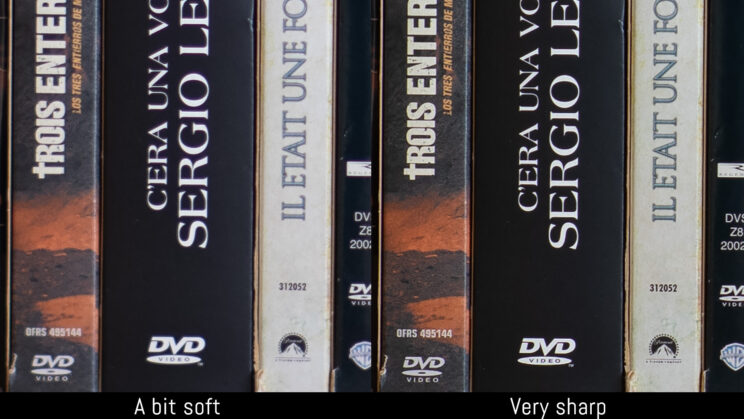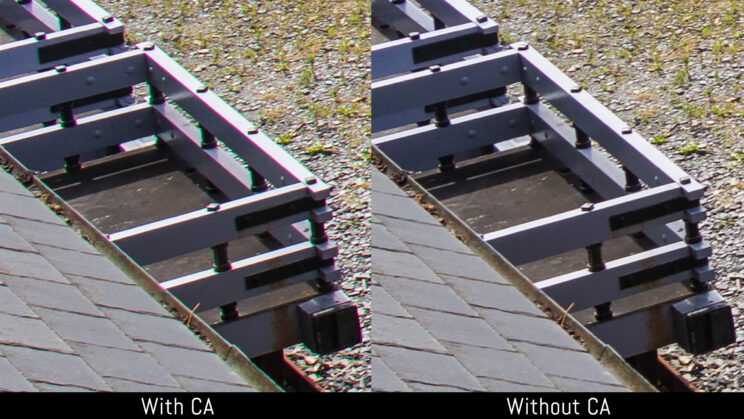You own a Canon Eos M model, or you’re thinking of getting one, and you’re interested in adding more lenses to your bag to improve the quality of your images in low light, to take better portraits of your children, to capture a wider view, or to focus closer when taking food shots.
Whatever you’re interested in photographing (or filming), you’ve come to the right place. We’ve spent a long time testing a wide range of lenses for the EF-M series, including those from Canon and third-party brands.
The products you see here are the ones we liked the most and feel you should consider for the attractive quality/price ratio. We also included extra information in each section that will help you decide which lenses are right for you.
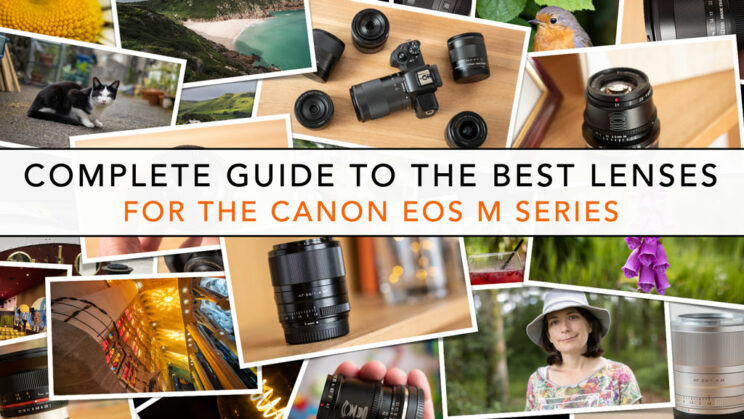
Ethics statement: this article is based on our personal experience with each lens. Some of these lenses are available for different camera systems, and may have been tested on a different camera brand than Canon. We made sure to state this where applicable. We were not asked to write anything about these products, nor were we provided any compensation of any kind. Within the article, there are affiliate links. If you decide to buy something after clicking the link, we will receive a small commission. To know more about our ethics, you can visit our full disclosure page. Thank you!
TABLE OF CONTENTS
1. Useful information
2. All-Purpose Zoom
3. Super Wide-Angle Lenses
4. Wide-Angle Lenses
5. Moderate Wide-Angle Lenses
6. Standard / Normal Lenses
7. Portrait Lenses
8. Macro Lenses
9. Telephoto Lenses
10. Canon EF-EOS M mount adapter
11. Speed Booster
12. Glossary
Useful information
At the time of publishing this article, there are more than 60 lenses compatible with the Canon EF-M mount. Let’s see what kind of things you should be aware of when choosing a lens for your Eos M camera.
Focal length range
In this article you will find lenses that allow you to capture a very wide view of a scene (short focal length), and others that allow you to zoom in on a distant subject (long focal length). Here is a visual representation of all the field of views covered.
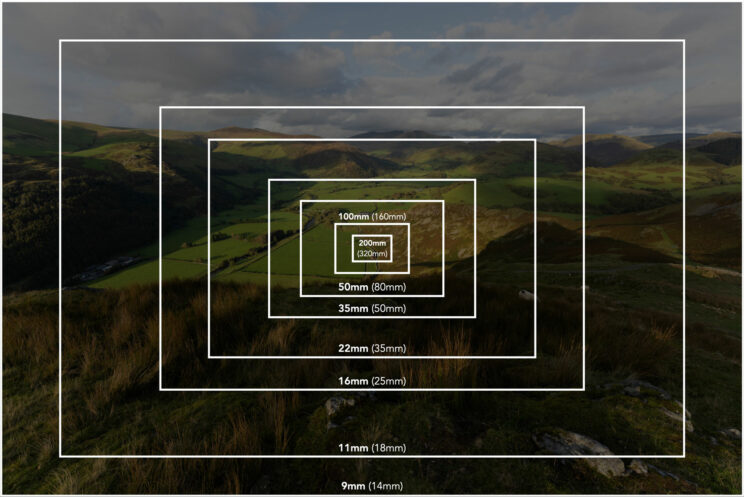
(see next paragraph below)
Equivalence
Throughout the article, you’ll see that we refer to the equivalent focal length of a lens. For example, the Canon EF-M 32mm, which is designed for APS-C sensors, has an equivalent field of view of 51mm on a full frame sensor (1.6x crop factor).
This is linked to the days of analogue, when 35mm film (full frame) was one of the most popular formats in use, and therefore the main reference. When the first digital cameras arrived, they had a smaller sensor than 35mm, hence the need for equivalence to compare lenses made for different formats. This has remained common practice today because there are a lot of systems with different sensor sizes.
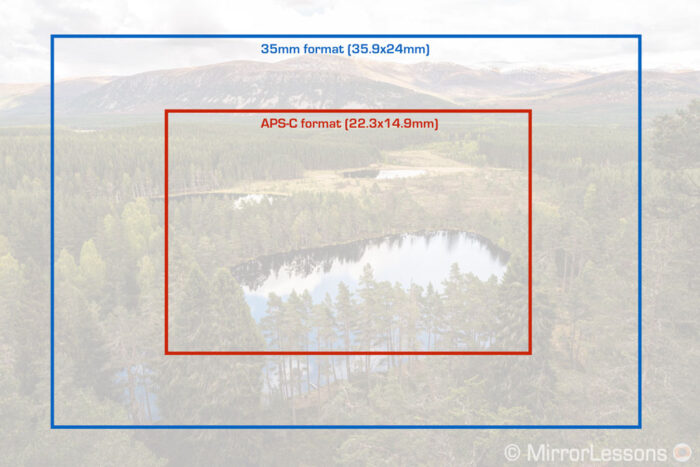
Autofocus
Canon, Sigma, Tamron and Viltrox are the only brands producing autofocus lenses (Tamron has made only one, the 18-200mm released in 2014). If AF is a priority for you, these are the brands to concentrate on.
Optical stabilisation
Canon lenses (except the 32mm 1.4 and 22mm f2) and the Tamron 18-200mm are the only ones with optical stabilisation. Since the M50 and other M cameras don’t have in-body stabilisation, this is something to consider if you do a lot of work hand-held for video, or stills in less-than-ideal light conditions.
Manual focus lenses
About 70% of the lenses available for your M50 are manual focus lenses. There is no denying that autofocus is convenient, but manual focus offers advantages too. For example, these lenses have a mechanical focus ring that can give you more precision and a better experience than the electronic rings found on AF lenses. Some of these MF lenses have a very fast aperture, others come at a very affordable price.
Tip: make sure to enable “Release shutter w/o lens” in the menu of your camera (Setup Menu page 5 > Custom Functions > Page 4) when using manual focus lenses, because they don’t have electronic contacts and therefore don’t communicate with the camera. This also means that the aperture value is not saved in the exif data of your photos, and in-camera lens corrections (distortion, vignetting etc.) are ineffective.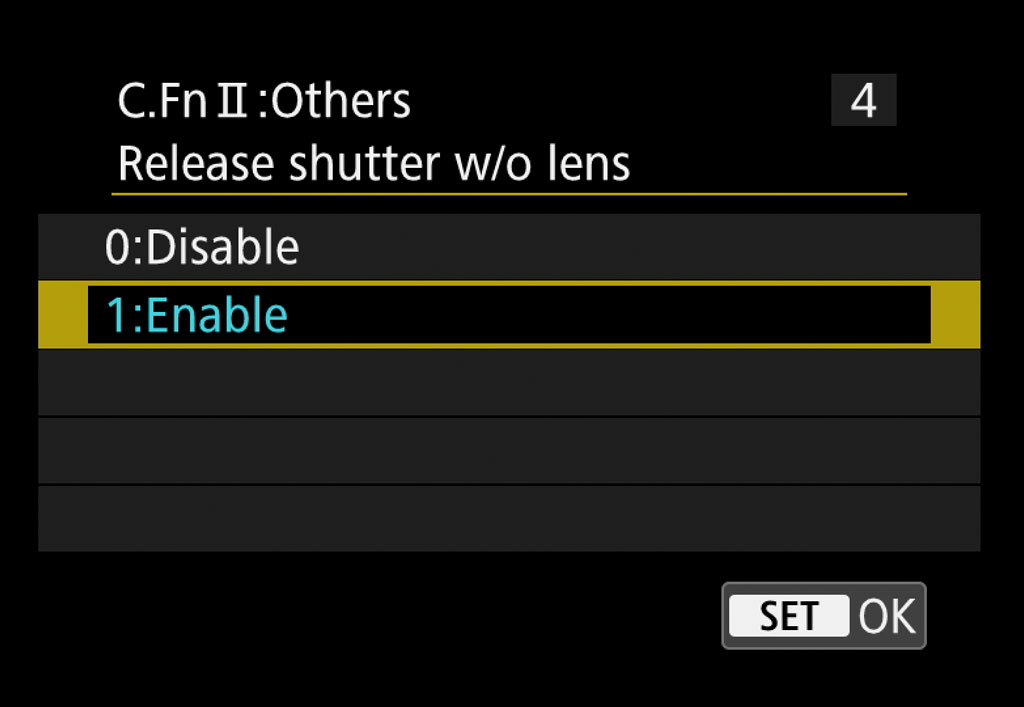
4K video and the reduced field of view
If you’re interested in doing video work with your Eos M, you need to be aware that in 4K, the field of view is severely cropped. This happens because the camera uses the central portion of the sensor rather than the entire width.
Important: this applies to the M50, M50 II and M200. It doesn’t apply to the M6 II which can record 4K without a crop thanks to its new sensor and faster image processor. Other Eos M cameras don’t have 4K capabilities.
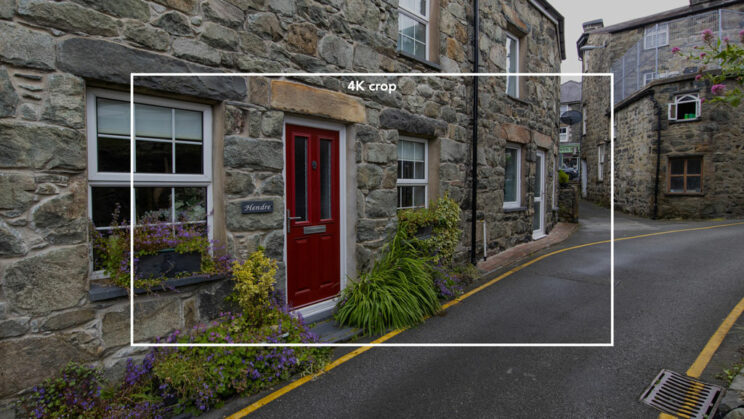
This is important to know because if you’re planning on making 4K videos, you’ll need to be careful to choose a lens that gives you the field of view that you need. While the crop can provide an advantage if you want to “zoom” in closer to your subject, it can be more challenging if you want to record a wide view of a location, especially if you don’t have a lot of space to move around.
For example, the image above was shot at 11mm, which is 18mm equivalent in full frame terms (meaning you’re in the super wide-angle category). Add the 4K crop (2.56x) and you get a 46mm equivalent field of view, which means you’re not in wide-angle territory anymore. In fact, a wide field of view in 4K is practically impossible, unless you own the M6 II.
Lens hood
Many lenses mentioned in this article are not supplied with a lens hood, and that includes most of the Canon EF-M lenses. If you read that a lens suffers a lot from flare, it’s worth considering one. It won’t get rid of them completely, but it can help when the light enters the lens from an angle. Also, a hood adds a bit of extra protection to the front of the lens. For your convenience, we added the links for each product.
Canon Eos M series
We tested most of these lenses with the Canon Eos M50 II, which is very similar to the M50, and shares characteristics with other models such as the M200. If you’re curious to know more about these cameras, the following articles will help.
Glossary
Throughout the article you’ll read some technical terms like chromatic aberration or vignetting. If you’re new to photography and don’t know what they mean, fear not! We’ve included an explanation for all of them at the end of the article.
Canon M50 Lens: All-Purpose Zoom
An all-purpose zoom allows you to go from wide to telephoto without changing lenses. That’s why they are a popular solution and every camera manufacturer has at least one in its catalogue. Canon is no exception.
Canon EF-M 18-150mm F3.5-6.3 IS STM
Autofocus – optical stabilisation – 29-240mm equivalent
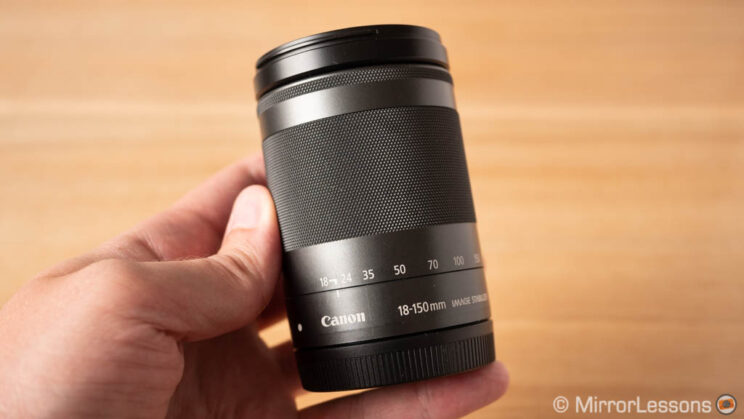
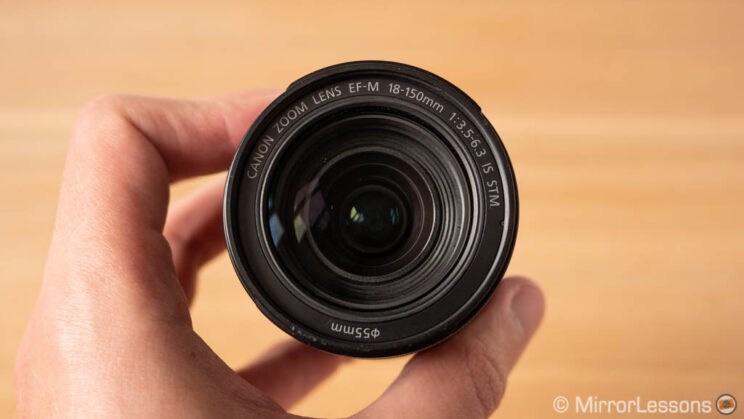
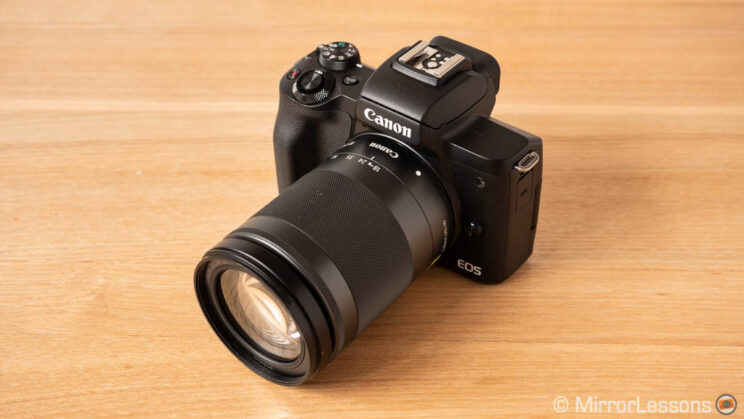
The 18-150mm is longer and a bit heavier than the other Canon EF-M lenses (excluding the 55-200mm), but it’s a minor trade-off considering the vast zoom range it offers. It has decent optical performance and good optical stabilisation that can save the day in low light (with static subjects) when you don’t have a tripod with you.
Why we like it:
- vast zoom range allows you to capture a good variety of subjects
- reliable autofocus performance
- decent sharpness throughout
- nice close-up capabilities
- good optical stabilisation
To consider:
- slow aperture of f/6.3 kicks in at 60mm
- chromatic aberration in the RAW files (unless you use Canon’s software), but it should be easy to remove
- a bit more flare than we’d like to see
Should I buy the Canon EF-M 18-150mm?
If it’s convenience you’re looking for, and you are not keen on changing lenses, the 18-150mm is one of the only solutions you can find. Just remember that it won’t be very helpful in low light (other than for static subjects), or if you want to capture very wide scenes.
Is the Canon EF-M 18-150mm good for video?
Yes, if you need the zoom range versatility, plus the optical stabilisation paired with the Digital IS function of your Eos M will help you with hand-held shots. The AF is a bit slower in video mode. The focus ring offers decent precision if you need to focus manually. Forget about it if you need to work in low light.
Reminder: the links below are affiliate links. If you decided to buy something after clicking the link, we will receive a small commission.
Check price of the Canon 18-150mm F3.5-6.3 on
Amazon | Amazon UK | B&H Photo | eBay
Canon EW-60F Lens Hood for the 18-150mm lens on
eBay
Used Canon lenses on
MPB US | MPB UK
Honorable mention: Tamron 18-200mm F3.5-6.3 Di III VC
There is another all-purpose zoom, the Tamron 18-200mm. It’s an older lens originally released in 2011 for Sony E-mount, and made available for Eos M cameras in 2014. It has the advantage of more reach at the telephoto end but is bigger than the Canon 18-150mm. I’ve read mixed opinions online: some claim better quality, other say the AF is slower. If I get the chance to test it personally, I will update the article with more information.
Additional resources:
Canon Eos M50 Lenses: Super Wide-Angle
Here we have the most interesting lenses that give you a very wide view of your scene. They are a great tool for capturing the vastness of a landscape, the night sky or the interior of a building for example.
Laowa 9mm F2.8 Zero-D
Manual focus – 14mm equivalent
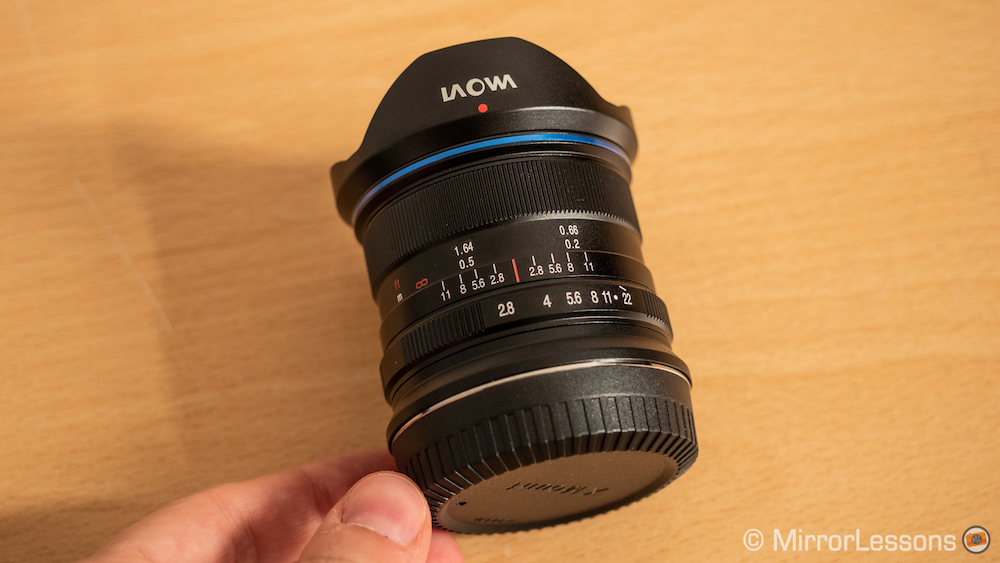
This is one of the widest rectilinear lenses you can buy for your Eos M50. Its small dimensions and light weight fit Eos M cameras perfectly. It’s nicely built with a smooth focus ring, a clicking aperture ring and a 49mm filter thread.
Why we like it:
- really compact with a solid metal build and built-in lens hood
- excellent sharpness across the frame, even at f2.8
- no relevant distortion
- nice sunstar effect when using small apertures
To consider:
- no electronic contacts
- invasive flare if you shoot into direct sunlight
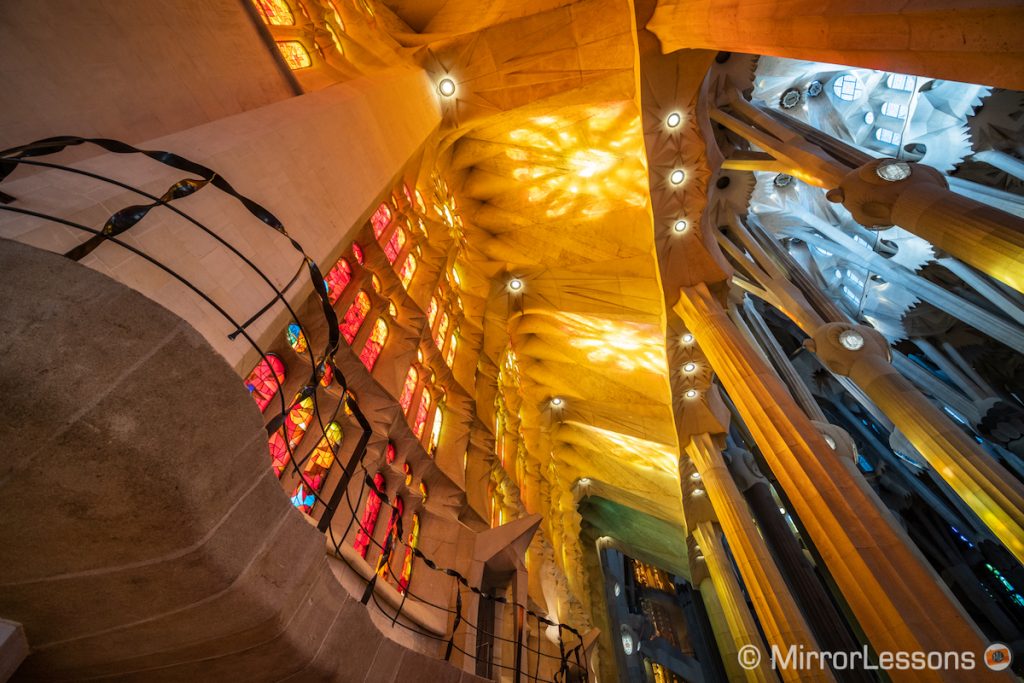
(This was taken with the Fujifilm X-T3 because we tested the X-mount version of this lens. But rest assured, the EF-M version is exactly the same.)
Should I buy the Laowa 9mm F2.8?
It’s the widest lens for the Eos M system (excluding fisheye lenses), so it’s an easy choice if you need to capture very wide views of a location. The price may be a bit higher than you would like, but the lens offers really good optical quality.
Is the Laowa 9mm F2.8 good for video?
Yes, for the same reason mentioned above. Its compact size and light weight is ideal for drone and gimbal work too.
Reminder: the links below are affiliate links. If you decided to buy something after clicking the link, we will receive a small commission.
Check price of the 9mm F2.8 Zero-D on
Amazon | B&H Photo | eBay
Canon EF-M 11-22mm F4-5.6 IS STM
Autofocus – Optical stabilisation – 18-35mm equivalent
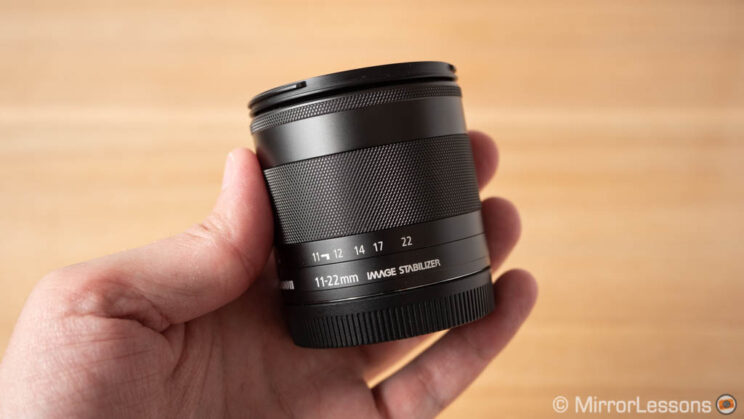
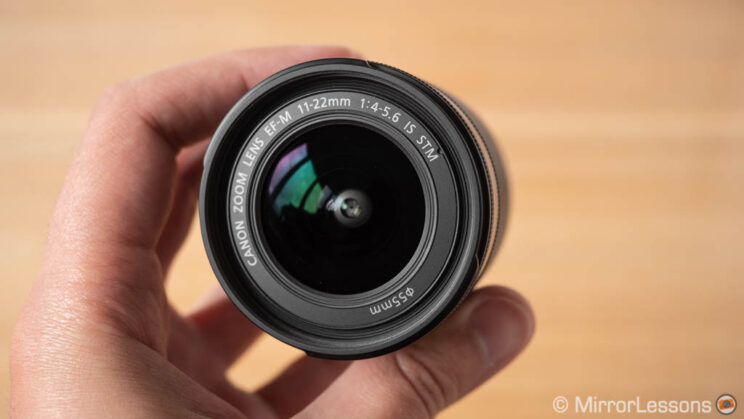
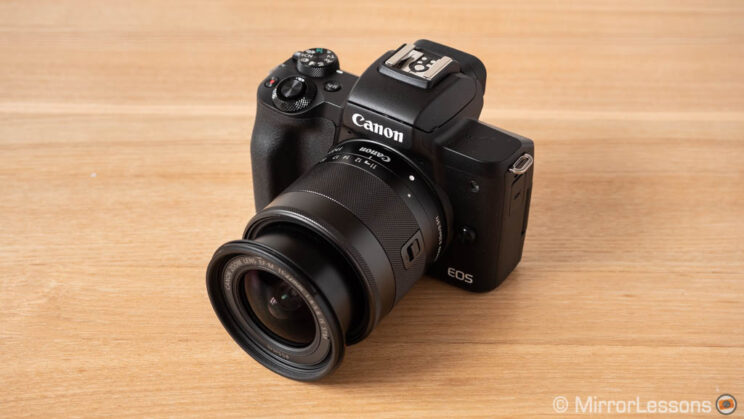
The Canon 11-22mm is small, light, covers a good range of short focal lengths and offers excellent optical quality. It has a metal mount, which gives it a more premium feel than other Canon lenses.
Why we like it:
- excellent sharpness at the centre through the entire zoom range (corners are a bit softer at 11mm until you close to f8, but nothing serious)
- good optical stabilisation
- useful close-up capabilities
- quiet and fast focusing
To consider:
- the slow aperture of f4-5.6 can be a bit limiting for low light work if you can’t take advantage of optical stabilisation and slow shutter speeds
- this is the kind of lens that could really do with a lens hood
Should I buy the Canon EF-M 11-22mm?
If you like the idea of wide-angle lenses but don’t want to stick to a single focal length (or you’re not sure how wide you should go), the 11-22mm gives you all the versatility you need.
Is the Canon EF-M 11-22mm good for video?
Yes, for the same reasons mentioned above. The combination of optical stabilisation and Digital IS on the camera give you decent results for hand-held shots. It can also work well for hand-held V-Logs. Not great for low light situations however.
Reminder: the links below are affiliate links. If you decided to buy something after clicking the link, we will receive a small commission.
Check price of the Canon 11-22mm F4-5.6 IS STM
Amazon | Amazon UK | B&H Photo | eBay
Canon EW-60E Lens Hood for the 11-22mm lens on
Amazon | Amazon UK | B&H Photo | eBay
Used Canon lenses on
MPB US | MPB UK
Samyang / Rokinon 12mm F2 NCS CS
Manual focus – 19mm equivalent
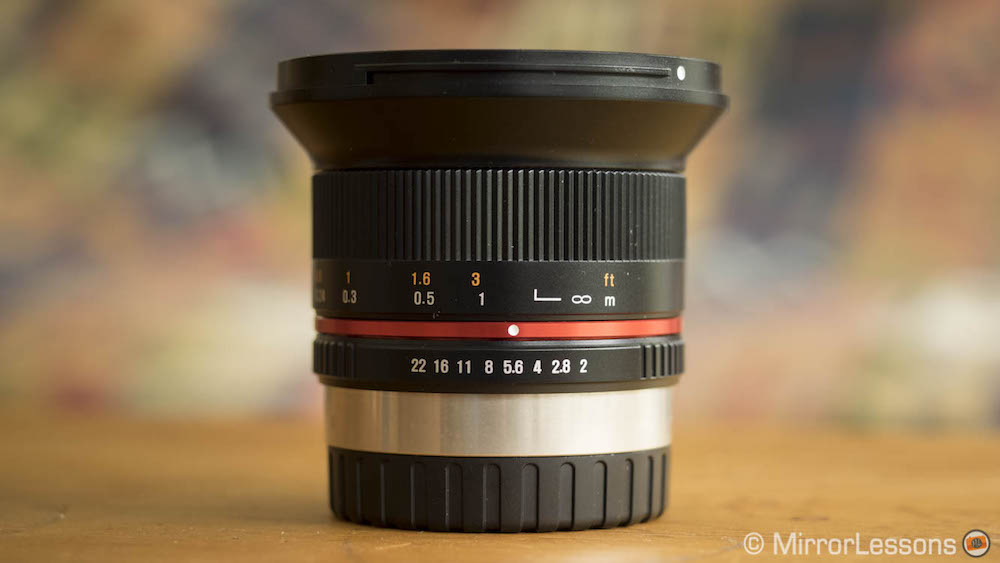
The Samyang 12mm F2 has been recommended many times over the years, thanks to its fast aperture of f/2 and its very good optical performance for astro-photography. But it does well for other genres too like landscapes. It’s light and has precise aperture and focus rings. It’s a shame Samyang decided to make the AF version of this lens only available for Sony cameras for the time being.
Why we like it:
- excellent sharpness
- fast aperture of f2 is great for astro-photos, with little coma in the corners
- compact size, lens hood included
To consider:
- no electronic contacts
- some barrel distortion, chromatic aberration and vignetting to deal with (best to shoot RAW and correct in post, some software like Lightroom have a built-in profile for the lens)
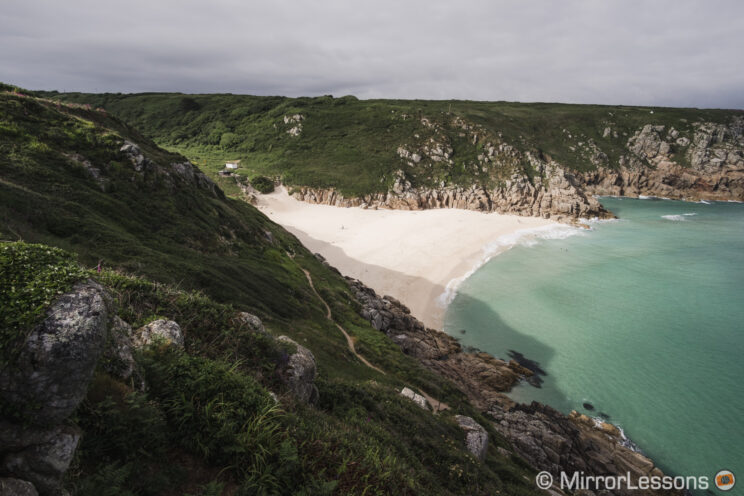
(This was taken with the Fujifilm X-Pro2 because we tested the X-mount version of this lens. But rest assure, the EF-M version is exactly the same.)
Should I buy the Samyang 12mm F2?
If you’re into landscape, and astro-photography in particular, it’s one of the best lenses you can find.
Is the Samyang 12mm F2 good for video?
Yes, if you need a wide angle lens for low light work. There is also a Cine version of this lens with a T stop of 2.2, a focus ring designed for easy use with a follow focus system, and a click-less aperture ring.
Reminder: the links below are affiliate links. If you decided to buy something after clicking the link, we will receive a small commission.
Check price of the Samyang / Rokinon 12mm F2 NCS CS
Amazon | Amazon UK | B&H Photo | eBay
7artisans 12mm F2.8
Manual focus – 19mm equivalent
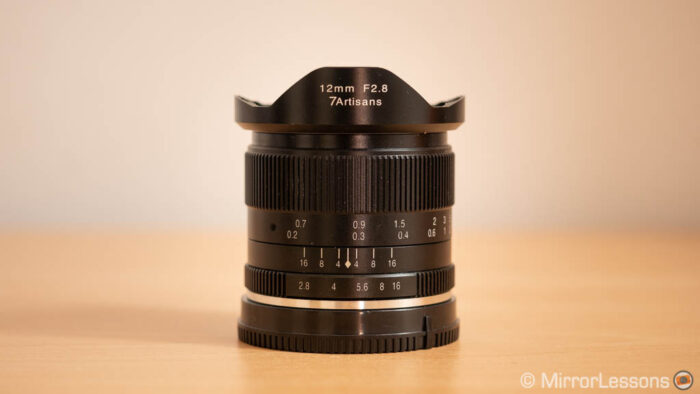
The 7artisans 12mm is one of the most affordable wide-angles on this list. The optical quality is not outstanding, but the performance at the centre is fine, and you’ll get good results across the frame if you set the aperture between f/5.6 and f/8. It doesn’t like direct sunlight however.
Why we like it:
- compact with an all-metal build
- good sharpness at the centre of the frame
- very affordable price
To consider:
- no electronic contacts
- corner sharpness improves only at f/8
- suffers from chromatic aberration and vignetting at the fastest apertures, flare can be invasive in direct sunlight
- our sample has a fiddly front cap
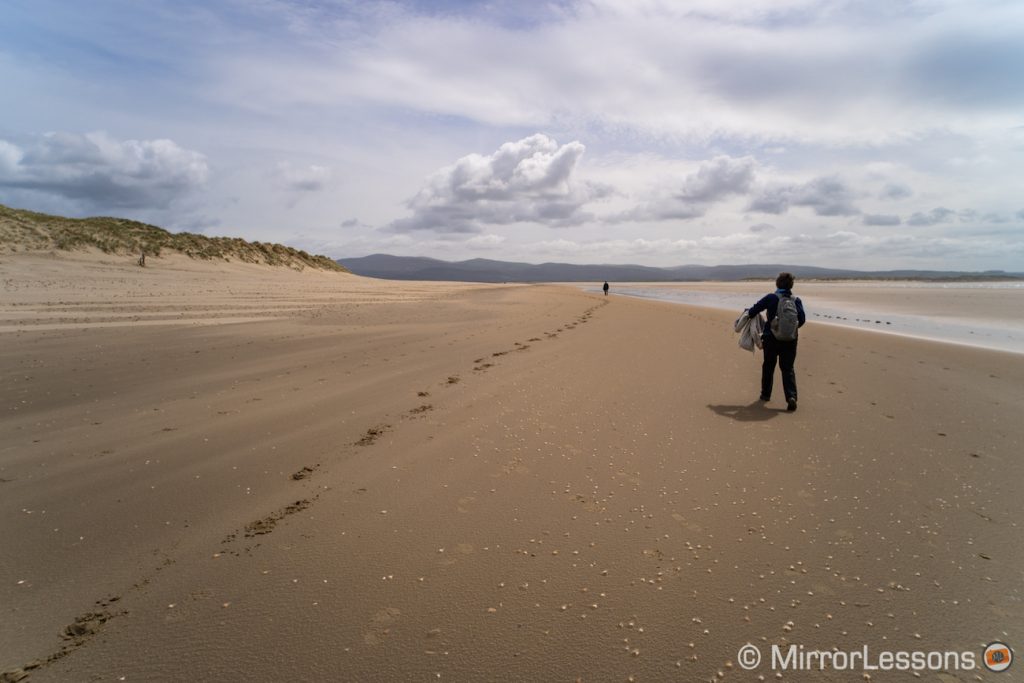
(This was taken with the Sony A6400 because we tested the E-mount version of this lens. But rest assured, the EF-M version is exactly the same.)
Should I buy the 7artisans 12mm F2.8?
If you’re looking for a wide-angle lens but you are on a strict budget, this 12mm is a good option. It will give you decent results as long as you work around its flaws.
Is the 7artisans 12mm F2.8 good for video?
Consider that closing the aperture to f/5.6 or f/8 for optimal quality will limit you in low light situations. Also, the lens has noticeable focus breathing.
Reminder: the links below are affiliate links. If you decided to buy something after clicking the link, we will receive a small commission.
Check price of the 7artisans 12mm F2.8 on
Amazon | Amazon UK | B&H Photo | eBay
Honorable mention: Samyang 8mm f/2.8 Fisheye II
Fisheye lenses have an extremely wide field of view and produce a distinctive distortion effect, which for example will make a landscape appear rounded (hemispherical effect) rather than straight. It can be a very creative tool, not just for landscapes but also architecture, or for video. I have not tried any for the EF-M system, but the Samyang 8mm F2.8 mark II is highly rated if you’re looking for one at a reasonable price.
Additional resource:
Canon M50 Wide-Angle Lenses
Here we have two lenses that still offer a wide view of a scene, but are less extreme than the ones seen above. They are more versatile, not just for landscapes or architecture, but also events, group shots and even environmental portraits, especially if you work in a small space.
Sigma Lens for Canon M50: 16mm F1.4 DC DN Contemporary
Autofocus – 25mm equivalent
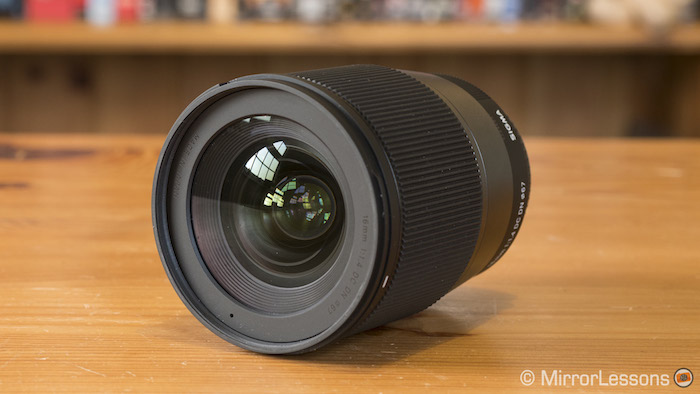
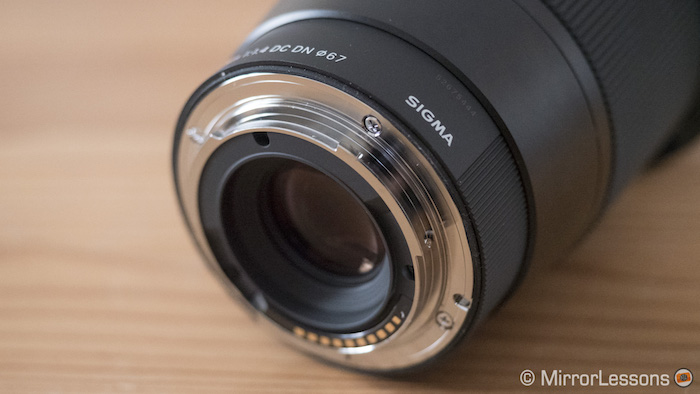
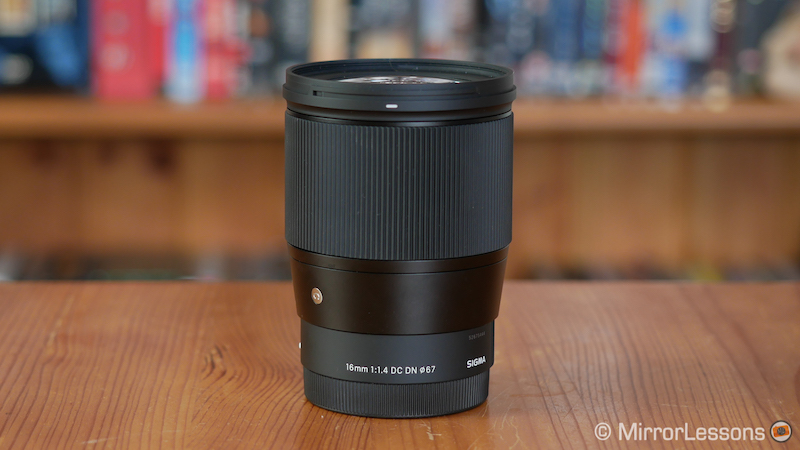
There are three lenses in the Sigma Contemporary series made for the Canon Eos M, and it’s hard not to recommend them all, starting with this 16mm. Its field of view is great for street, reportage and events, and the bright aperture of F1.4 helps a lot in low light situations, or when you want a bit of subject separation (at short focus distances).
Why we like it:
- excellent optical quality with good sharpness from 1.4 already
- pleasant and smooth bokeh
- fast and silent AF motor
- large and precise focus ring
- bayonet mount is sealed against dust and moisture
- lens hood included
To consider:
- a bit of chromatic aberration to deal with in post when used at the fastest aperture
- a bit large for Eos M cameras, but it is not a heavy lens
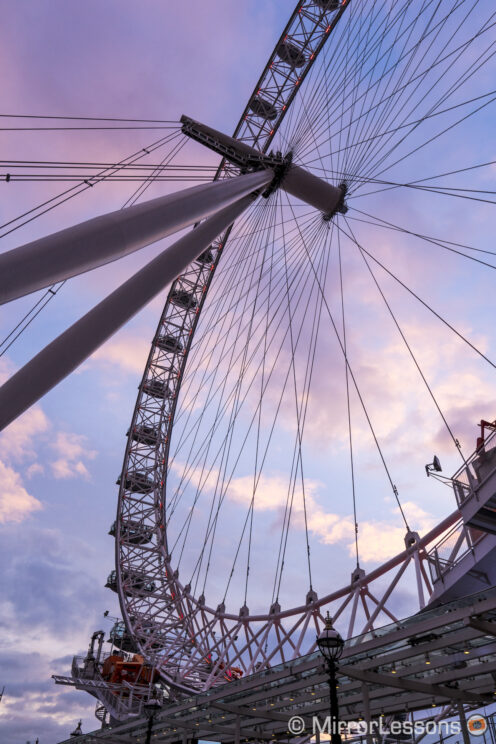
(This was taken with the Sony A6300 because we tested the E-mount version of this lens. But rest assured, the EF-M version performs in the same manner.)
Should I buy the Sigma 16mm F1.4?
If you want the perfect mix of a wide angle, fast aperture, excellent optical quality and competitive price, the Sigma 16mm is highly recommended.
Is the Sigma 16mm F1.4 good for video?
All the praise above applies to video as well. The large focus ring is nice to use, and precise despite being electronic. The AF motor is fast and quiet in video mode. The only negative is chromatic aberration at f/1.4, which is much more difficult to eliminate in post when compared to still photos.
Reminder: the links below are affiliate links. If you decided to buy something after clicking the link, we will receive a small commission.
Check price of the Sigma 16mm F1.4 DC DN C on
Amazon | Amazon UK | B&H Photo | eBay
TTArtisan 17mm F1.4
Manual focus – 27mm equivalent
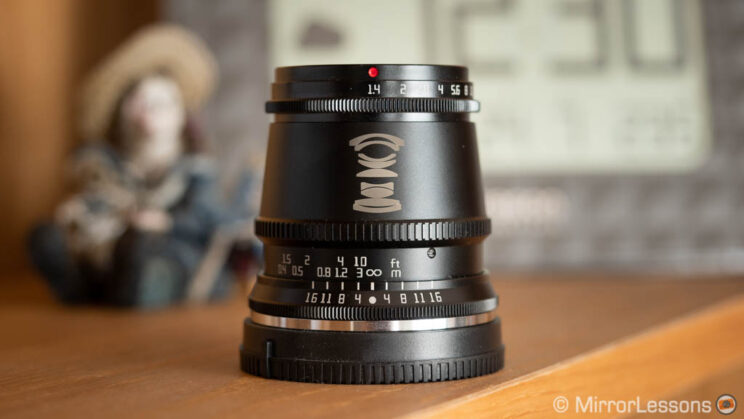
Here is another compact, lightweight and inexpensive lens that offers a “premium-like” all-metal build quality, a fast aperture and decent optical quality.
Why we like it:
- Very affordable price
- good build quality with a smooth focus ring and a precise clicking aperture ring
- centre sharpness is decent at 1.4 and excellent from f/2.8
To consider:
- corner sharpness is good only from f/5.6
- a fair amount of vignetting at the fastest aperture (but easy to remove in post)
- barrel distortion (more difficult to fix entirely)
- cyan / purple ghost flares in direct sunlight
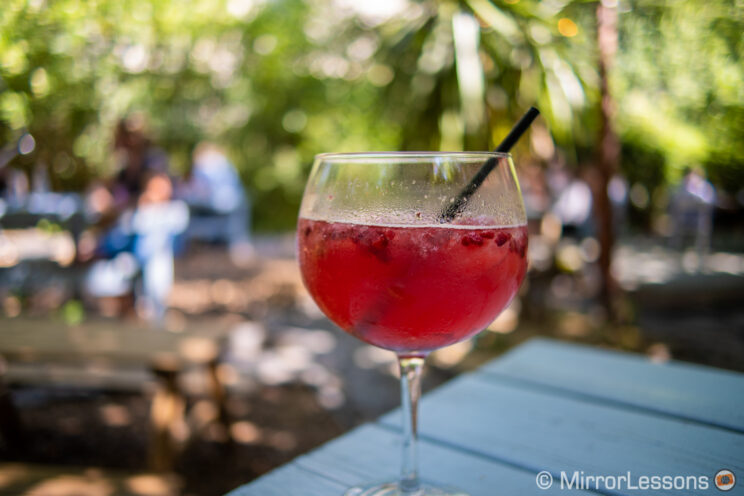
(This photo was taken with the Sony A6400 because we tested the E-mount version on the lens. The EF-M version is exactly the same.)
Should I buy the TTArtisan 17mm F1.4?
If you want to spend the least amount of money, the 17mm 1.4 is hard to ignore. Cope with its flaws and take advantage of its fast aperture and versatile angle of view. You can do a lot with it.
Is the TTArtisan 17mm F1.4 good for video?
There is a bit of focus breathing (not a lot to be honest), and of course the same drawbacks described above. But the manual focus experience is very nice and the combination of the short focal length combined with the fast 1.4 aperture makes it very fun to use, especially at close focus distances.
Reminder: the links below are affiliate links. If you decided to buy something after clicking the link, we will receive a small commission.
Check price of the TTArtisan 17mm F1.4 on
Amazon | Amazon UK | B&H Photo | eBay
TTArtisan or Third party 40.5mm Lens Hood on
Amazon | Amazon UK | B&H Photo | eBay
Note: when choosing a third party lens hood, make sure the thread is 40.5mm and select one designed for the 17mm focal length (or 25-27mm equivalent). If the hood is too long, you will see it in the frame.
Canon M50 Lenses: Moderate Wide-Angle
The last part regarding the wide-angle category is dedicated to lenses that don’t offer a very wide view of your scene, but are wide enough to contextualise your subject. It’s a popular choice for street photographers, but also portrait and event photographers. Personally, I use this kind of lens a lot to take pictures of my toddler: I can be close to him yet still incorporate what’s around him, and it’s useful indoors when you don’t have a lot of space to move around.
Canon EF-M 22mm F2 STM
Autofocus – 35mm equivalent
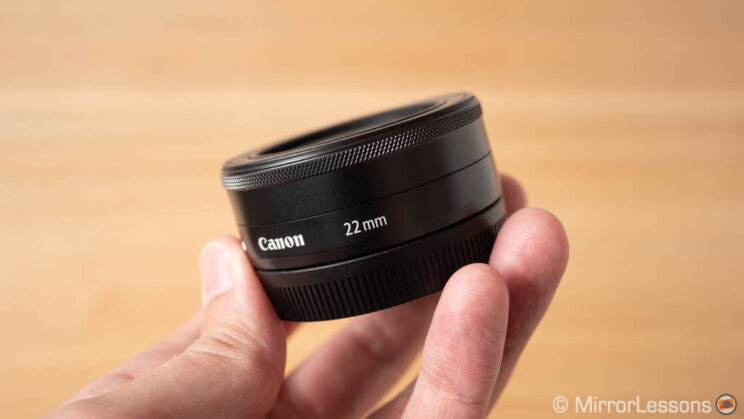
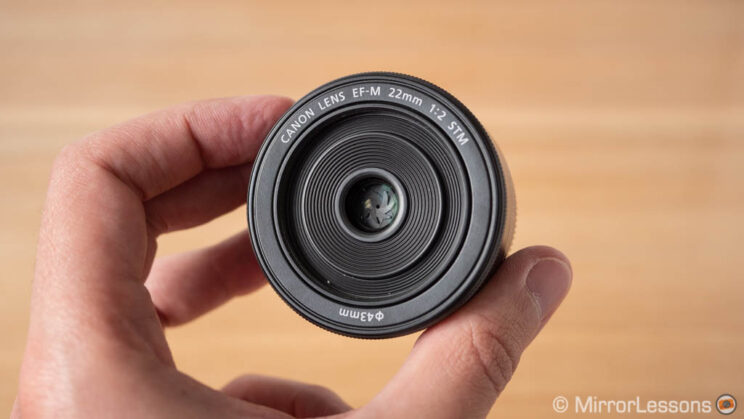
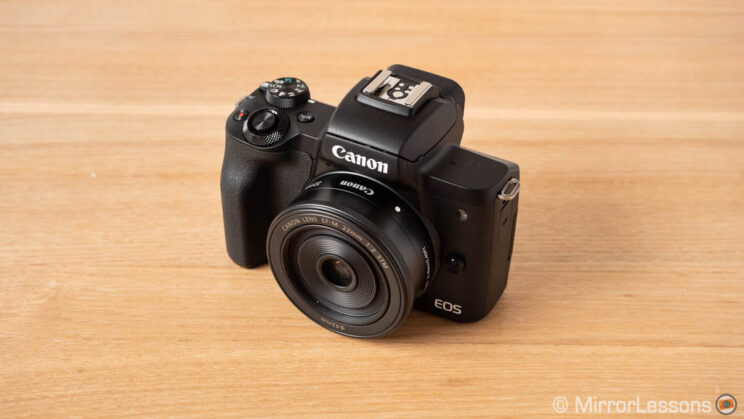
The 22mm is one of my absolute favourite lenses for the M50. Its “pancake” size makes it a perfect match if you want to keep your gear as compact as possible, yet you don’t have to compromise: the quality is excellent and the AF is fast and reliable.
Why we like it:
- very small, but well built with a metal mount
- sharp at f2, and razor sharp from f/2.8 (corners are perfect from f/4)
- nice bokeh and decent subject separation if you focus close
- decent close-up capabilities
To consider:
- small amount of chromatic aberration to correct in post with the RAW files (unless you use Canon software)
- tiny amount of barrel distortion
- the AF is not completely quiet for stills
Should I buy the Canon EF-M 22mm?
The most compact lens for the Eos M has autofocus, excellent optical quality and a fast aperture. It’s a must have in my opinion.
Is the Canon EF-M 22mm good for video?
Fortunately the AF motor becomes quieter in video mode. I can see this lens being very useful for v-logs if you want to prioritise compactness at all costs.
Reminder: the links below are affiliate links. If you decided to buy something after clicking the link, we will receive a small commission.
Check price of the Canon 22mm F2 STM on
Amazon | Amazon UK | B&H Photo | eBay
Canon EW-43 Lens Hood on
Amazon | Amazon UK | B&H Photo | eBay
Used Canon lenses on
MPB US | MPB UK
Viltrox 23mm F1.4 STM
Autofocus – 37mm equivalent
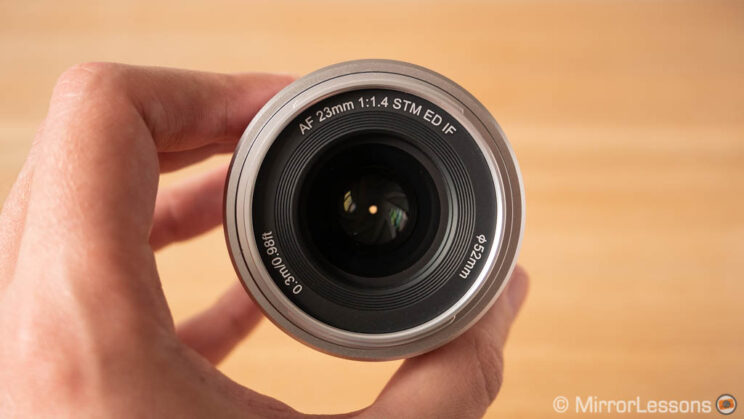
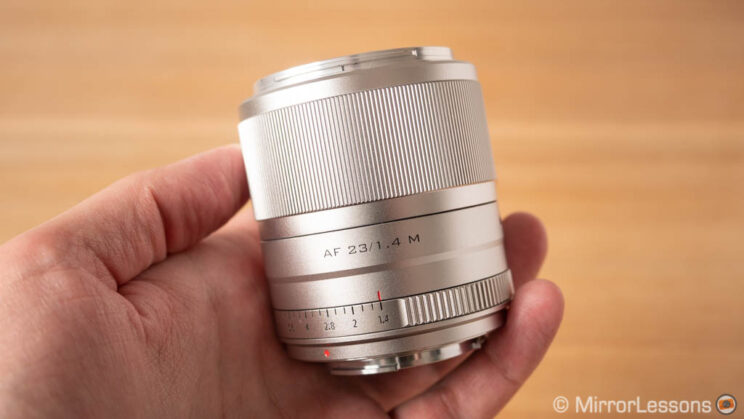
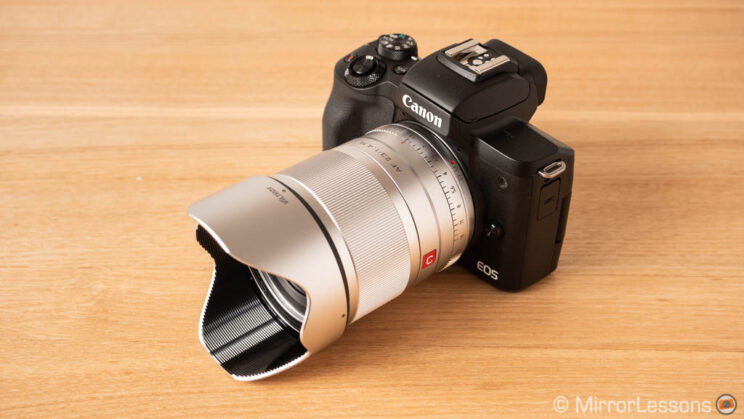
The Viltrox 23mm F1.4 blends a fast aperture with autofocus at a very competitive price. It has an unusual USB port at the rear to receive firmware updates that can improve the performance or fix a problem (see next paragraph). Strangely, it is only available in silver for the Canon EF-M mount.
Important: make sure to have the latest firmware of the lens installed (version 1.1.0 at the time of publishing this article) to avoid autofocus issues. You can download the firmware and follow the instructions on the Viltrox website.
Why we like it:
- nice metal build quality, light weight, lens hood included
- fast 1.4 aperture and precise AF
- good sharpness overall, very decent at f1.4 and peaks at f/4 (corners are soft until f2.8 and peak at f/5.6)
- good value for the money
To consider:
- the AF is precise but a bit slower than Canon EF-M lenses
- flare in direct sunlight, even with the source just outside of the frame
- chromatic aberration at the fastest aperture (much better from f/2.8)
- bokeh a little nervous and distracting at times
Should I buy the Viltrox 23mm F1.4?
If you work a lot in low light, the fast 1.4 aperture and reliable autofocus will be of great help.
Is the Viltrox 23mm F1.4 any good for video?
You will appreciate the click-less aperture ring, and the focus ring is precise. There is almost no focus breathing. The AF works fast in video mode but produces a very low electronic noise (you have to place your ear pretty close to the lens to hear it, but it can be picked up by the built-in mic).
Reminder: the links below are affiliate links. If you decided to buy something after clicking the link, we will receive a small commission.
Check price of the Viltrox 23mm F1.4 on
Amazon | Amazon UK | B&H Photo | eBay
Canon Eos M50 Lenses: Standard / Normal
A standard or normal lens in photography generally refers to the 50mm (equivalent) focal length, which is close to the field of view of the human eye. It is one of the most popular lenses, and it’s a great first buy to expand your kit. It is versatile for various genres, and a good start for taking better portraits.
Sigma Lens for Canon M50: 30mm f/1.4 DC DN Contemporary
Autofocus – 48mm equivalent

Like the 16mm, the Sigma 30mm F1.4 ticks most of the boxes: very good optical quality, competitive price, good autofocus performance and a fast 1.4 aperture. Plus, it is not as big as the 16mm and balances better on small mirrorless cameras like the M50.
Why we like it:
- great optical quality when it comes to sharpness and bokeh
- nice, large rubberised focus ring
- fast autofocus
- mount is sealed against dust and moisture, comes with a lens hood
To consider:
- chromatic aberration at the fastest aperture

(This photo was taken with the Sony A6300 because we tested the E-mount version of the lens. The EF-M version performs in the same way.)
Should I buy the Sigma 30mm F1.4?
It’s a toss up between this 30mm and the Canon 32mm below. They are both excellent lenses with their pro and cons. The Sigma’s biggest advantage is that it is less expensive, and its optical quality is very good.
Is the Sigma 30mm F1.4 good for video?
Chromatic aberration can be the only annoying thing to deal with at f/1.4, because it is more difficult to remove from video footage than a RAW still images. As for everything else, it performs well and the AF motor is really fast if you need quick refocusing.
Reminder: the links below are affiliate links. If you decided to buy something after clicking the link, we will receive a small commission.
Check price of the Sigma 30mm f/1.4 DC DN C on
Amazon | Amazon UK | B&H Photo | eBay
Canon EF-M 32mm F1.4 STM
Autofocus – 51mm equivalent
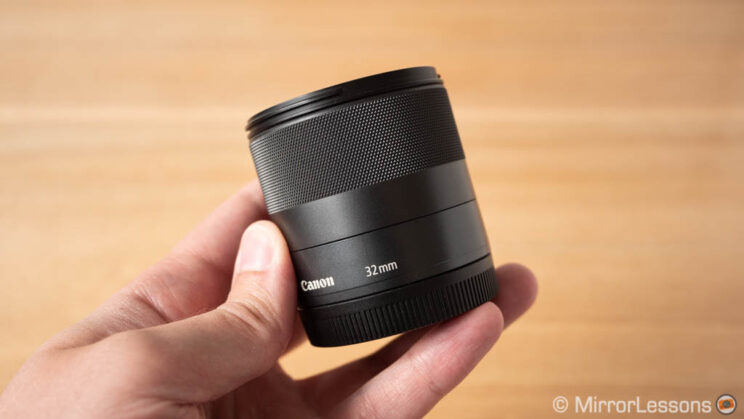
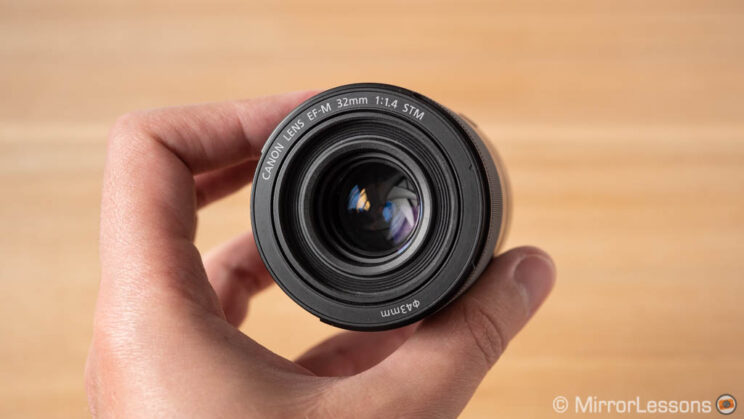
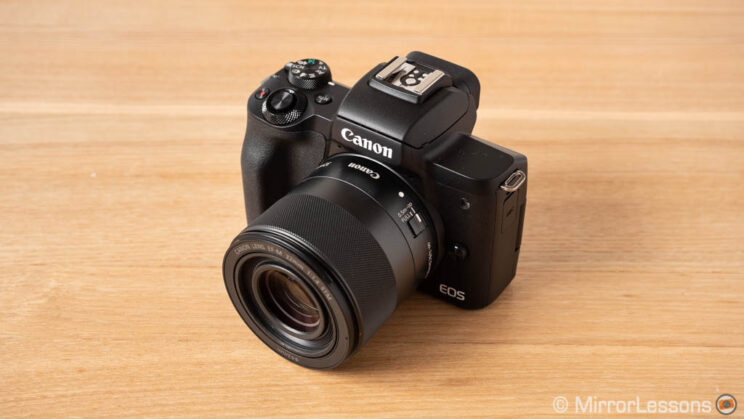
It’s not the extra 2mm, and certainly not the higher price tag, that will convince you to choose the 32mm instead of the Sigma 30mm described above. But there are three aspects that make the Canon lens more interesting: it is smaller, it doesn’t suffer from chromatic aberration at the fastest aperture and has excellent close focus capabilities.
Why we like it:
- great optical quality with distinctive bokeh rendering
- lets you focus close to an object (0.25x magnification)
- good build quality with metal mount
- fast autofocus (I took pictures of my son on a swing and it did really well on the M50 II)
To consider:
- The AF is fast but emits a rattling sound in photo mode. (It gets quieter in video mode)
- more expensive than the Sigma 30mm F1.4
- small orange and purple ghost flares in direct sunlight
Should I buy the Canon EF-M 32mm?
If you don’t mind spending the extra cash, the 32mm gives you extra quality and versatility in a smaller package (when compared to the Sigma 30mm 1.4).
Is the Canon EF-M 32mm good for video?
Yes, for all the qualities described above. The AF motor gets quieter when switching to video mode, although focusing is slower than the Sigma 30mm lens. That however is not necessarily a negative thing: you’ll get a smoother and more natural transition which you may find pleasant enough to keep in your final edit.
Reminder: the links below are affiliate links. If you decided to buy something after clicking the link, we will receive a small commission.
Check price of the Canon EF-M 32mm F1.4 on
Amazon | Amazon UK | B&H Photo | eBay
Canon ES-60 Lens Hood on
Amazon | Amazon UK | B&H Photo | eBay
Used Canon lenses on
MPB US | MPB UK
7Artisans 35mm F0.95
Manual focus – 56mm equivalent
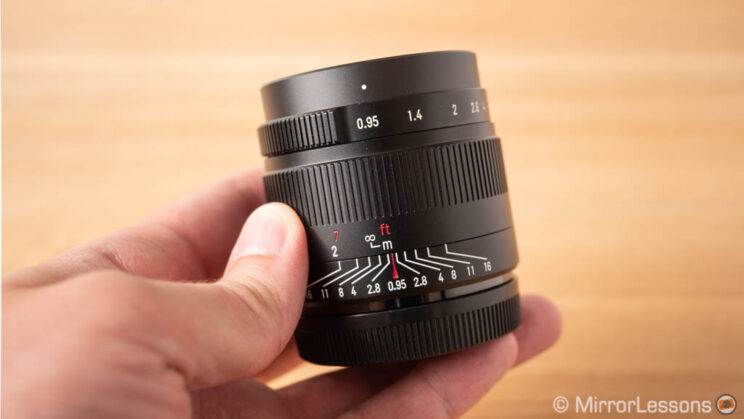
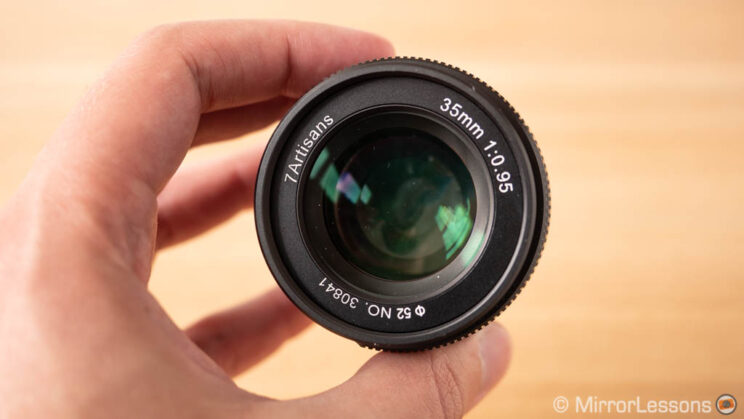
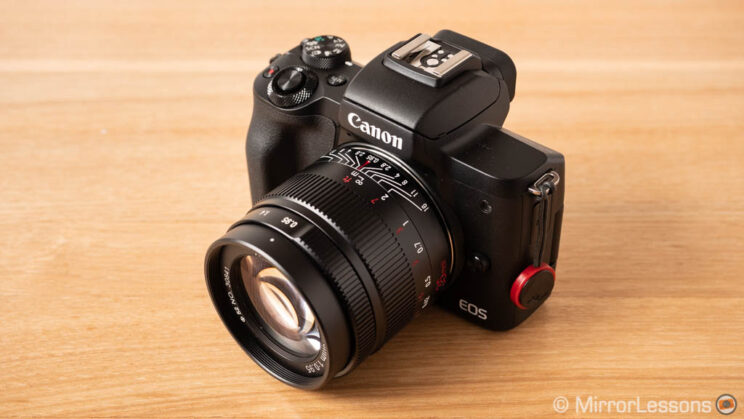
The 7Artisans 35mm F0.95 has the largest aperture of any lens mentioned in this article, and that gives you the chance to play with a very shallow depth of field. It’s not perfect from an optical point of view, but the price is very affordable for a 0.95 lens. It is a bit heavier than other lenses mentioned here, but this is a very small trade-off.
Why we like it:
- my favourite when it comes to build quality, it feels like a premium lens
- very smooth focus ring and large distance scale on the barrel
- pretty decent sharpness at F0.95, improves significantly from f/2 and peaks between f/4 and f/5.6 (corners get better from f/2.8)
- imperfect but pleasant bokeh rendering
- vignetting is well contained considering the wide aperture
To consider:
- weak resistance to flare
- chromatic aberration is reduced only at f/2.8
- the click-less aperture ring makes it difficult to select small apertures from f/8 to f/16 due to them being so close
- at 0.95 the depth of field is very shallow, so manual focusing requires some practice
Should I buy the 7Artisans 35mm F0.95?
If you’re into portraits and want a lens that can give you a distinctive look, this 35mm 0.95 might be exactly what you’re looking for. Just remember that manual focus at 0.95 requires some practice because the depth of field is very shallow.
Is the 7Artisans 35mm F0.95 good for video?
Playing with such shallow depth of field can be very interesting for video too, and the 7Artisans 35mm is a good way to experiment without spending too much money.
Reminder: the links below are affiliate links. If you decided to buy something after clicking the link, we will receive a small commission.
Check price of the 7Artisans 35mm F0.95 on
Amazon | Amazon UK | B&H Photo | eBay
52mm Lens Hood on:
Amazon | Amazon UK | B&H Photo | eBay
Note: when choosing a third party lens hood, make sure the thread is 52mm and select one designed for the 35mm lens (50mm equivalent). If the hood is too long, you will see it in the frame. If it is too short, it won’t protect the lens enough.
TTArtisan 35mm F1.4
Manual focus – 56mm equivalent
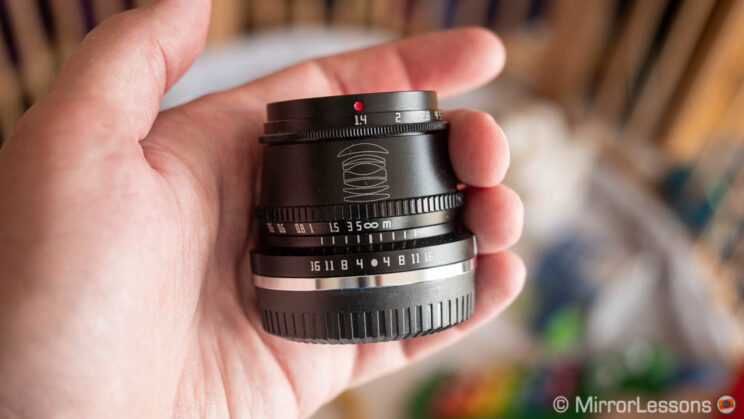
There is no need to beat around the bush: the reason we listed the TTArtisan 35mm F1.4 is because it has a very low price, so low in fact that I wonder how it is possible in the first place. I was expecting horrible optical quality but, all things considered, it does pretty well.
Why we like it:
- the cheapast lens listed in this article
- tiny but well designed, with easy-to-grip focus and aperture rings
- decent sharpness wide open, very good from f/2.8 (corners are decent from f/2.8 and sharp at f/5.6)
- plain and smooth bokeh balls with the right background
To consider:
- invasive and kind of “ugly” flares
- visible vignetting at 1.4
- chromatic aberration disappears only at f/5.6
- bokeh can appear quite nervous if the background is too busy
- clicking aperture ring but the small values are too close together and in fact you can’t select f/11
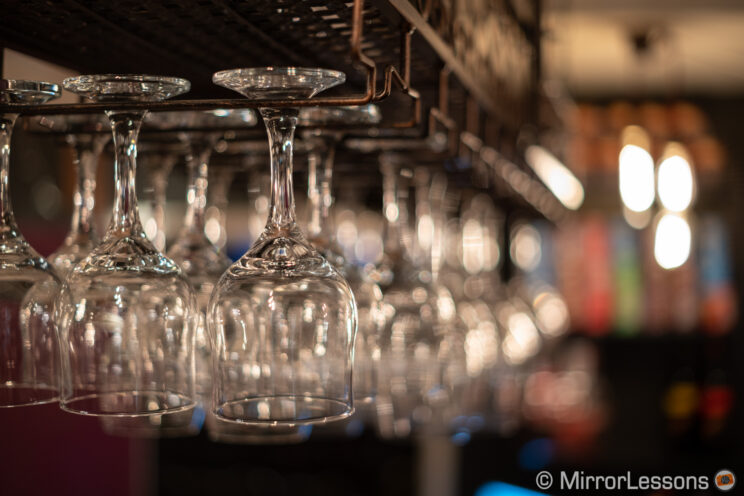
(This image was taken with the Fujifilm X-T4 because we tested the X-mount version of the lens. Rest assured, the EF-M version is identical)
Should I buy the TTArtisan 35mm F1.4?
If you like the idea of a fast aperture lens but have never used one, the 35mm 1.4 allows you to take your first steps for less than $80. There is no better value for money than this.
Is the TTArtisan 35mm F1.4 good for video?
Same reasoning as above: if you’re on a really tight budget, you’ll get a lot out of this lens, especially if you need it for low light work.
Reminder: the links below are affiliate links. If you decided to buy something after clicking the link, we will receive a small commission.
Check price of the TTartisan 35mm F1.4 on
Amazon | Amazon UK | B&H Photo | eBay
39mm Lens Hood on
Amazon | Amazon UK | B&H Photo | eBay
Note: when choosing a third party lens hood, make sure the thread is 39mm and select one designed for the the 35mm lens (50mm equivalent). If the hood is too long, you will see it in the frame. If it is too short, it won’t protect the lens enough.
Honourable mentions: Viltrox 33mm F1.4 STM and Samyang 35mm F1.2 ED AS UMC CS
The list of available lenses in the 50mm equivalent range is long, and it’s difficult to test them all. However, two extra products deserve a quick mention.
The Viltrox 33mm F1.4 has autofocus and a click-less aperture ring. But for a few extra bucks, you can get the Sigma 30mm so that’s why we didn’t invest in one.
The Samyang 35mm F1.2 provides you with a very fast aperture and excellent quality according to many reviewers, and it has a competitive price.
Additional resources:
Canon M50 Lenses: Portrait
The products listed in the previous chapter are great to first start experimenting with the portrait genre. If you want to go further, you should consider a true ‘portrait’ lens. The longer focal length allows you to take headshots without being too close to the subject (and add distortion to the face). Furthermore, this type of lens is (usually) designed with extra attention to sharpness and bokeh rendering.
Sigma Lens for Canon M50: 56mm F1.4 DC DN Contemporary
Autofocus – 90mm equivalent
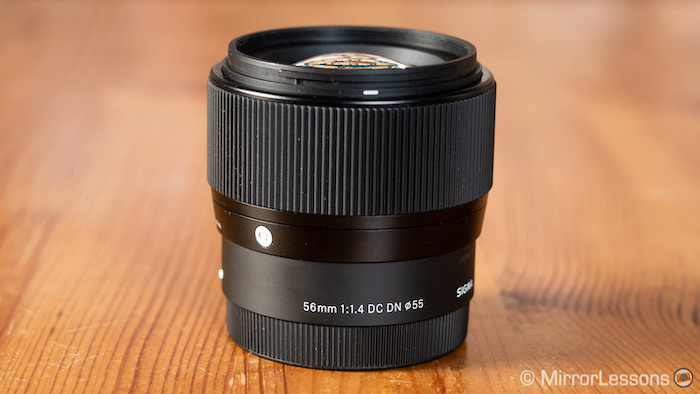
The Sigma 56mm is one of our favourite portrait lenses for mirrorless APS-C cameras. The optical quality is among the best you can find for your M50, it has autofocus and it is quite compact compared to other Sigma lenses (the 16mm most notably), which means it fits the small size of an Eos M camera really well.
Why we like it:
- the sharpest out of the three Sigma lenses mentioned in this article, and one of the sharpest on the entire list
- nice and smooth bokeh
- very quiet AF performance
- compact size, sealed mount, hood included
To consider:
- The AF is not as fast as with native lenses, but it is a small difference

(This image was taken with the Sony A6300 because we tested the E-mount version of the lens. The EF-M version has the exact same design.)
Should I buy the Sigma 56mm F1.4?
Yes. In my opinion it is the best portrait lens listed here. It gets everything right, from the optical quality to the compact size, to the AF performance. A must-have.
Is the Sigma 56mm F1.4 good for video?
Yes, for the same reason mentioned above. The focus ring is also precise to use when needed. The only drawback is that the internal mic of your camera will pick up a small noise when the lens is focusing.
Reminder: the links below are affiliate links. If you decided to buy something after clicking the link, we will receive a small commission.
Check price of the Sigma 56mm F1.4 DC DN C on
Amazon | Amazon UK | B&H Photo | eBay
Viltrox AF 56mm F1.4 M
Autofocus – 90mm equivalent
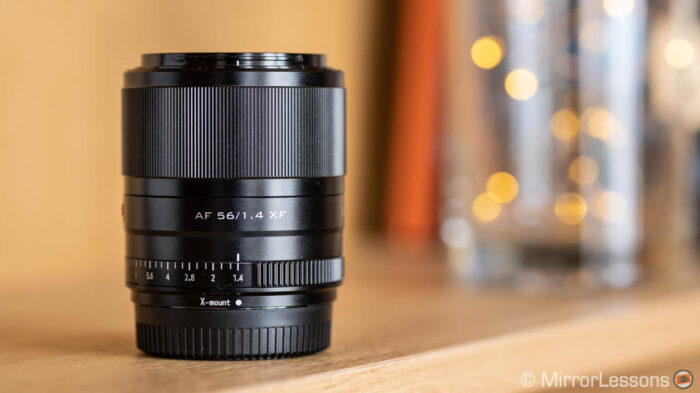
The Sigma 56mm may be my first choice, but I realise some of you might be on a budget, and this is where the Viltrox comes in. It’s less expensive than the Sigma, and while it doesn’t offer the same optical quality, it has a fast AF motor and the firmware can be updated easily with the built-in USB port on the back. Like the 23mm, it is only available in silver for Eos M cameras (the one in the photo above is the Fujifilm version).
Why we like it:
- more affordable than the Sigma 56mm
- fast autofocus performance
- lightweight but with a good metal build, including the hood
To consider:
- not as sharp as the Sigma at f/1.4, and less attractive bokeh, but overall decent performance
- small flare in direct light
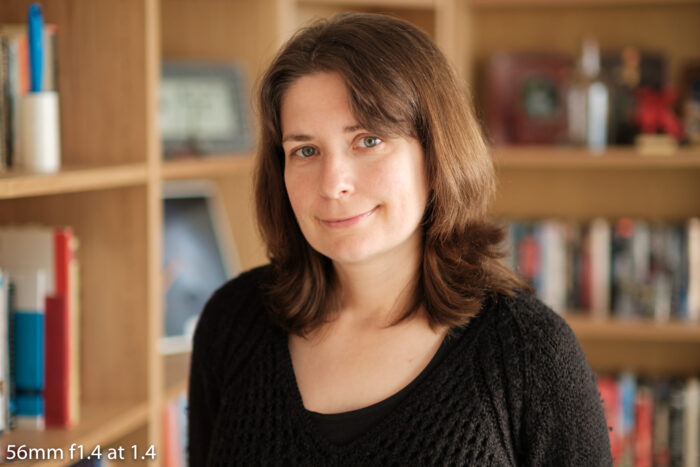
(This image was taken with the Fujifilm X-T4 because we tested the X-mount version of the lens. The EF-M version is the same except for the external colour.)
Should I buy the Viltrox 56mm F1.4?
If you want a good portrait lens with autofocus without spending the extra money for the Sigma 56mm, the Viltrox is the next best thing.
Is the Viltrox 56mm F1.4 good for video?
It’s worth considering. The click-less aperture ring allows you to make smooth aperture changes (unlike with the Fuji X version) and the lens only has a small amount of focus breathing.
Reminder: the links below are affiliate links. If you decided to buy something after clicking the link, we will receive a small commission.
Check price of the Viltrox AF 56mm F1.4 on
Amazon | Amazon UK | B&H Photo | eBay
TTArtisan 50mm F1.2
Manual focus – 80mm equivalent
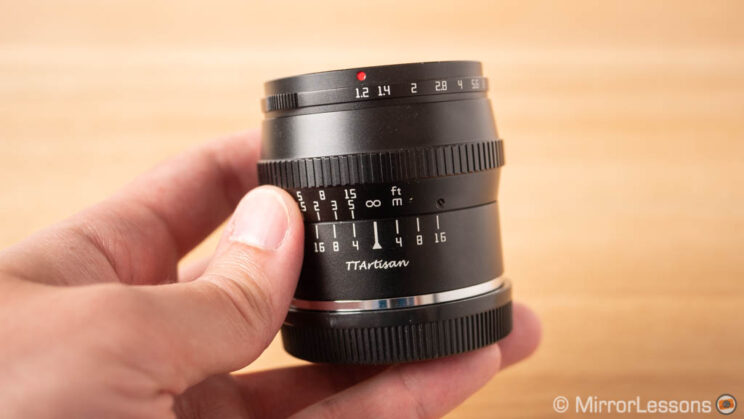
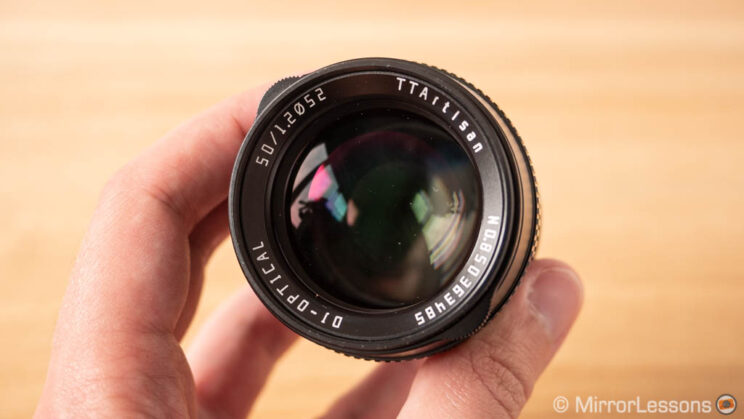

Here is another manual focus lens that gave me a pleasant surprise. It’s not the sharpest but has a nice bokeh, and overall it gives you a very pleasant look for portraits. You can also focus fairly close to your subject, and if you look at the price, you’ll understand why we included it.
Why we like it:
- compact with a metal build quality
- precise focus ring with the right amount of friction
- vignetting well-contained
- good close-up capabilities
- soft and creamy bokeh rendering
- price
To consider:
- average sharpness at f/1.2, it improves a lot from f/2 (corners from f/4)
- fair amount of ghost flares and glare
- chromatic aberration at the fastest apertures (although less than with other manual focus lenses to be fair)
Should I buy the TTArtisan 50mm F1.2?
It’s a nice lens on a budget. It comes with a few trade-offs (like all cheap lenses), but it works well for portraits.
Is the TTArtisan 50mm F1.2 good for video?
It has a clicking aperture ring and the steps are a bit weak. There is a fair amount of focus breathing as well. But if you can get past these negative points, you can certainly put its fast aperture and nice bokeh to good use for video work.
Reminder: the links below are affiliate links. If you decided to buy something after clicking the link, we will receive a small commission.
Check price of the TTArtisan 50mm F1.2 on
Amazon | Amazon UK | B&H Photo | eBay
52mm Lens Hood on
Amazon | Amazon UK | B&H Photo | eBay
Note: my copy of the lens came with a metal hood in a separate box, so double check yours before buying one. When choosing a third party lens hood, make sure the thread is 52mm and select one designed for the the 50mm lens (75mm equivalent).
Canon Eos M50 Macro Lenses
Macro is a fascinating genre to discover. There aren’t many lenses available for the EF-M system, but we’ve selected two we think are worth considering.
Canon EF-M 28mm F3.5 Macro IS STM
Autofocus – Optical stabilisation – 45mm equivalent

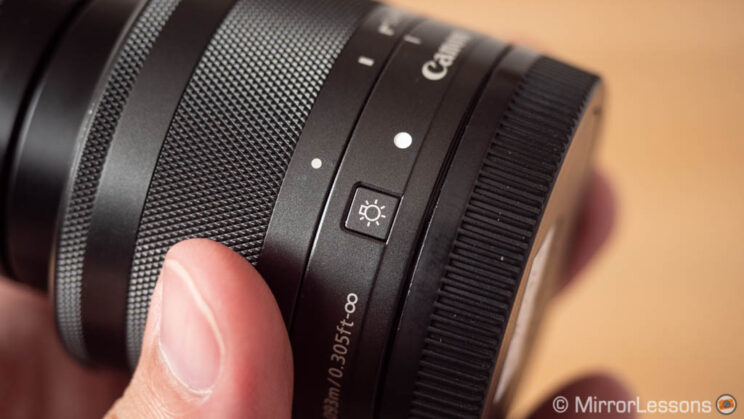
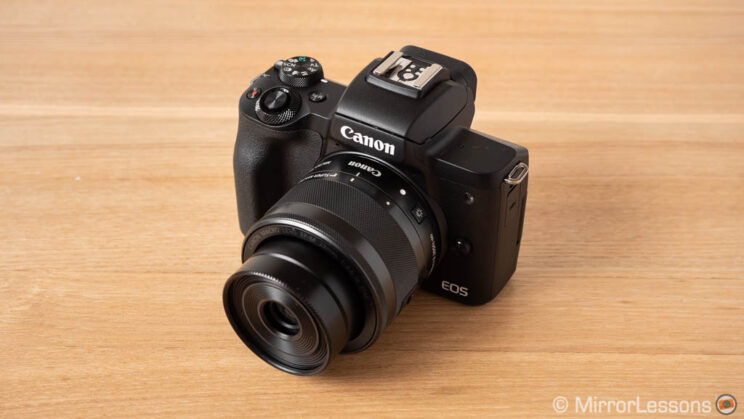
The Canon 28mm is the only Macro lens with autofocus, and while manual focus is often preferred when doing macro work, it’s a nice option to have if you’re taking quick shots of objects at a moderately short distance. It has a super macro mode (1.2x magnification) and two built-in LED lights that you can turn on simultaneously or selectively (left or right).
Why we like it:
- very good sharpness at large and small apertures
- fast and precise AF motor, even when focusing close
- manual focus experience better than most Canon EF-M lenses
- comes with front LED light to counteract the shadow casted by the lens when shooting very close to the subject
- lens hood included
To consider:
- plastic mount
- 28mm is not very long, so you really need to get close to your subject (like one or two centimetres close), which is not without its challenges
- the integrated LED light is nice but the light is very direct, which can produce unwanted reflections on shiny objects
- the integrated LED light works well for very close subjects only
Should I buy the Canon 28mm Macro?
It’s a great lens to start with, and you get some unique features like the built-in LED light which will help beginners especially.
Is the Canon 28mm Macro good for video?
Yes, for the same reasons stated above. The AF motor is very silent but can hunt for focus at close distances.
Reminder: the links below are affiliate links. If you decided to buy something after clicking the link, we will receive a small commission.
Check price of the Canon 28mm F3.5 Macro on
Amazon UK | B&H Photo | eBay
Used Canon lenses on
MPB US | MPB UK
7Artisans 60mm F2.8 Macro
Manual focus – 96mm equivalent
The Canon 28mm is a great macro lens, but the focal length is short and forces you to be very close to your tiny subject. The 7Artisans 60mm gives you a bit more distance, and that can make macro work easier especially if you have accessories around you or additional light sources.
Note: I tested the mark I version of this lens, but recently 7Artisans released the mark II version which is supposed to have a more robust build quality and better optics. It is also smaller and doesn’t extend when focusing close. All in all, it sounds like a better product for almost the same price, so I listed the mark II version in the affiliate links below. You can watch more about it in Micael Widell’s review on YouTube.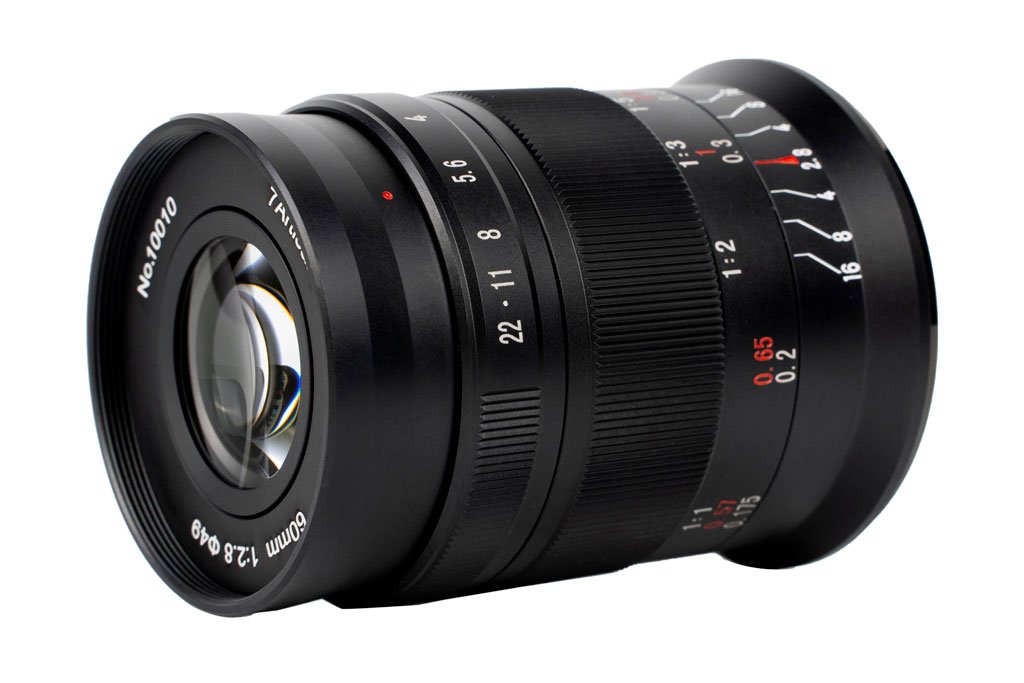
Why we like it:
- good sharpness (best from f/4)
- 1:1 magnification
To consider:
- build quality leaves a bit to be desired (mark I version)
Should I buy the 7Artisans 60mm Macro?
If you’re really into macro but don’t want to spend a lot, this 60mm Macro is one of the most interesting options. Make sure to get the mark II version.
Is the 7Artisans 60mm F2.8 Macro good for video?
The mark I sample we tested has a huge amount of focus breathing (you basically lose the 1:1 magnification as soon as you focus away from the shortest distance). I hope the mark II version does a little better in this regard.
Reminder: the links below are affiliate links. If you decided to buy something after clicking the link, we will receive a small commission.
Check price of the 7Artisans 60mm F2.8 Macro II on
B&H Photo | eBay
Canon M50 Lens: Telephoto
Photographing a small bird, or your child playing football outside, requires a long telephoto lens. The availability for the Eos M system is limited, and for now we decided to mention just the one below.
Canon EF-M 55-200mm F4.5-6.3 IS STM
Autofocus – Optical stabilisation – 88-320mm equivalent
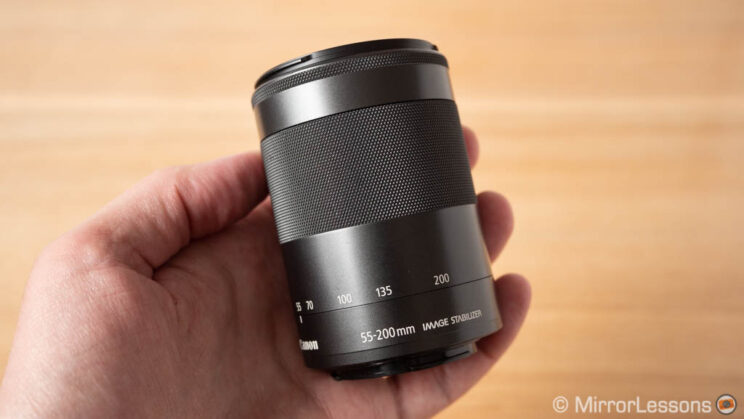
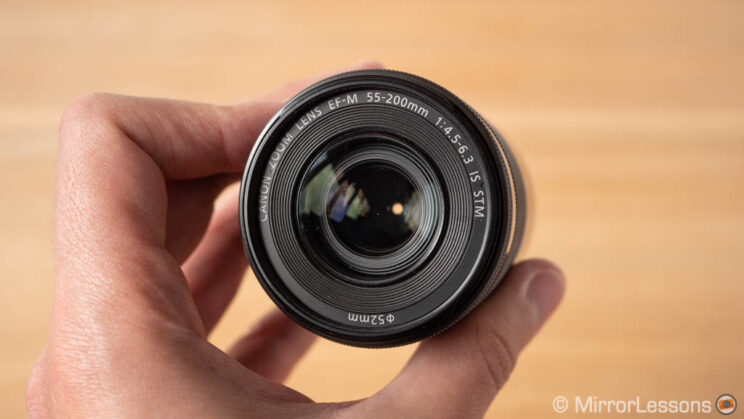
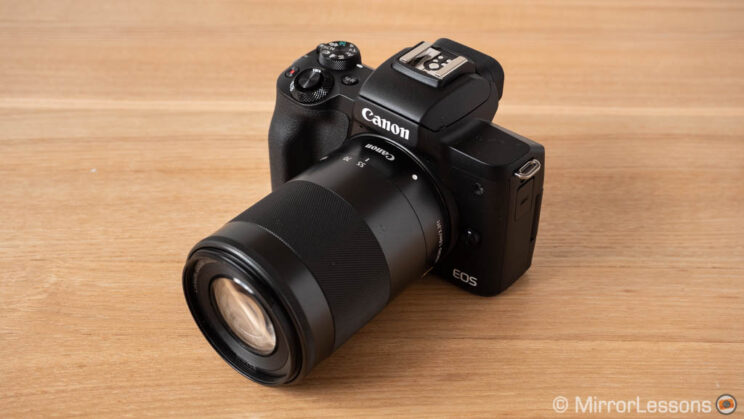
I’ll be honest: I wasn’t very impressed by the Canon 55-200mm. It is soft at 200mm, the optical stabilisation is average, and the zoom ring on my copy moved a bit too freely. But if you’re looking for a telephoto lens with autofocus, it is one of the only options out there, especially if you want something small and compact. The other alternative is the Tamron 18-200mm that I mentioned earlier in the All-Purpose Lenses chapter.
Why we like it:
- one of the only telephoto lenses with autofocus
- fast and silent AF performance
- compact and light
To consider:
- plastic mount, zoom and focus rings move a bit too freely
- disappointing sharpness at 200mm
- average optical stabilisation
- 320mm can still be too short for wildlife and birds (depending on the subject and location)
Should I buy the Canon EF-M 55-200mm?
Despite its flaws, the 55-200mm is one of the only options available, so if you need long focal lengths, it’s the one to get. Just consider this: if you already own the 18-150mm, or are interested in getting one, the all-purpose zoom lens might be money better spent if you don’t mind sacrificing 50mm at the tele end.
Is the Canon EF-M 55-200mm good for video?
The AF motor is fast and silent, and you’ll get slightly better stabilisation thanks to the Digital IS function of the camera. Note that at 200mm, it is difficult to be completely stable.
Reminder: the links below are affiliate links. If you decided to buy something after clicking the link, we will receive a small commission.
Check price of the Canon EF-M 55-200mm f/4.5-6.3 on
Amazon | Amazon UK | B&H Photo | eBay
Canon ET-54B Lens Hood on
Amazon | B&H Photo | eBay
Used Canon lenses on
MPB US | MPB UK
Canon EF-EOS M mount adapter and EF DSLR lenses
You can have access to even more lenses for your Eos M if you consider the EF-EOS M adapter and the huge range from Canon, Sigma and Tamron for the EF-mount (Canon’s DSLR series).
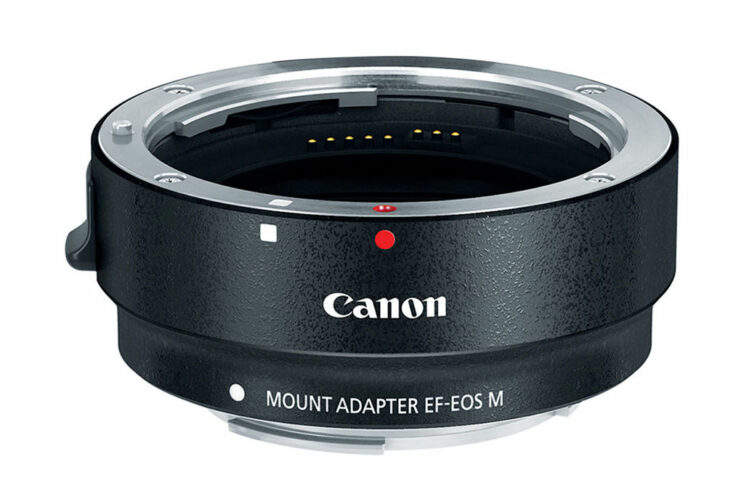
However, my advice is not to go down this route unless you have a specific reason for it.
With perhaps the exception of a few compact primes, most DSLR lenses are larger and heavier than any lens I mentioned in this article. If you also consider the extra bulk added by the adapter itself, you’ll lose all the advantages of a compact camera like the M50, and it can even make the set-up unbalanced and more uncomfortable to hold.
Of course, there can be exceptions. You might want to use a specific lens that is not available for the EF-M mount, or you have a bunch of Canon DSLR lenses at home that you’d like to try on your Eos M camera.
The good thing about Canon’s EF-EOS M adapter is that it maintains all automatism including autofocus. There are also third party adapters that do the same thing like Viltrox and Commlite, for example, although the autofocus can be a bit slower.
Check price of the Canon EF-EOS M adapter on
Amazon | Amazon UK | B&H Photo | eBay
Additional resources:
Canon M50 Speed Booster
Another option is a Speed Booster adapter (also known as focal reducer) like the 0.71x Viltrox EF-EOS M2. This kind of adapter has optics inside that almost neutralise the crop factor / equivalence (meaning that a 50mm full frame lens maintains almost the same field of view on the Eos M50). Furthermore, it makes the lens 1 stop faster.
Below is an example with a similar adapter and a lens for full frame cameras (Sigma 35mm F1.4 Art) that I tested a few years ago for the Sony APS-C mirrorless system. The result is similar to having a 37.5mm f/1.0 lens.
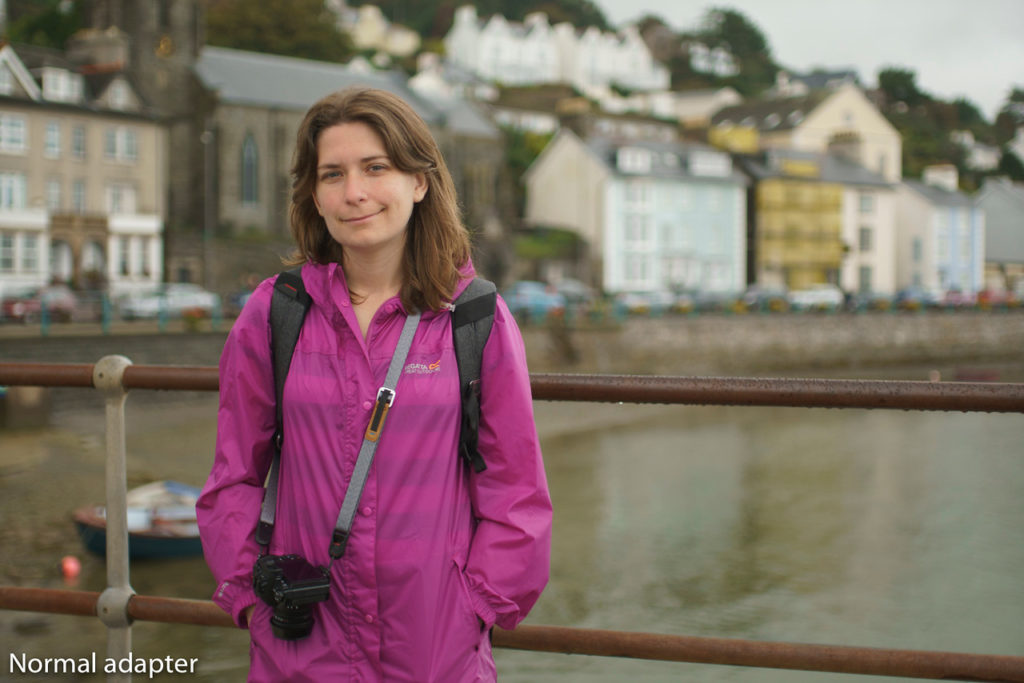
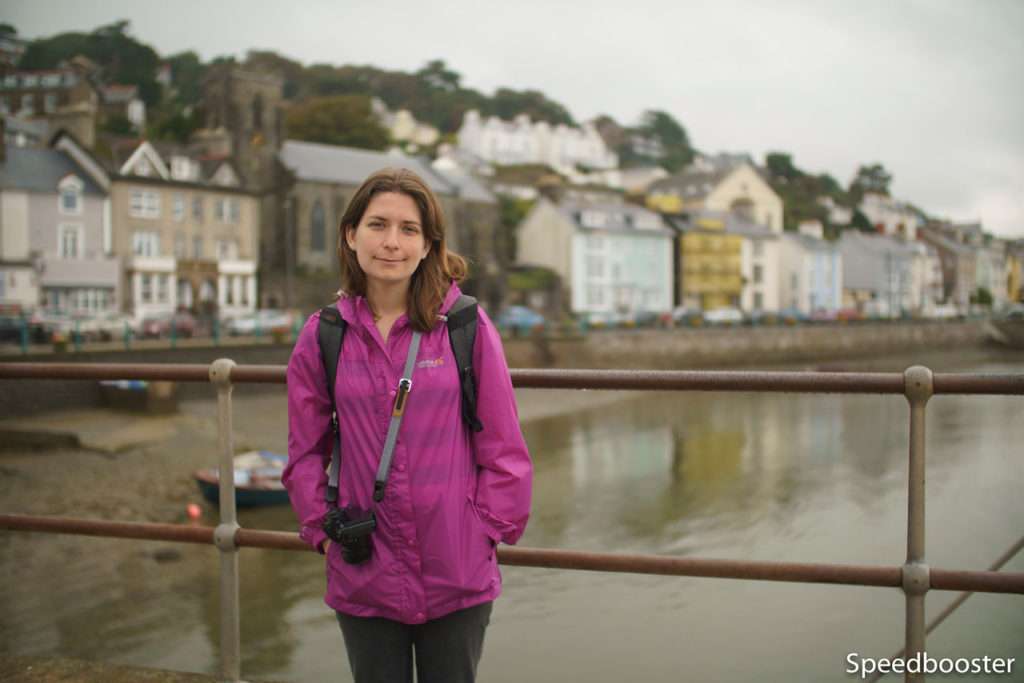
Here as well, we have a very specific adapter that won’t interest everyone, but it’s a nice option to consider if you plan to use full frame EF lenses on your Canon Eos M. It could be particularly helpful if you want to record 4K on cameras that have a severe sensor crop (see Useful Information chapter at the beginning of the article). Also, bear in mind that there can be a bit of image quality degradation when using such an adapter, and this can vary from brand to brand.
Check price of EF-EOS M Speed Booster adapters on
Amazon | Amazon UK | B&H Photo | eBay
Additional resources:
- Christopher Frost’s review of the Viltrox Speed Booster on YouTube
- Review of the Viltrox Speed Booster by Olegas Photos
Glossary
Aperture
It is the opening of the internal lens diaphragm that lets the light pass through and reach the sensor. With a wide opening (for example f/1.4), more light goes in and the depth of field is shallow (more background blur). With a small aperture (ex. f/11), there is less light passing through and less shallow depth of field. Note that large apertures are often referred to as “fast” apertures because they allow you to use a faster shutter speed (the time it takes for the camera to capture the photograph).
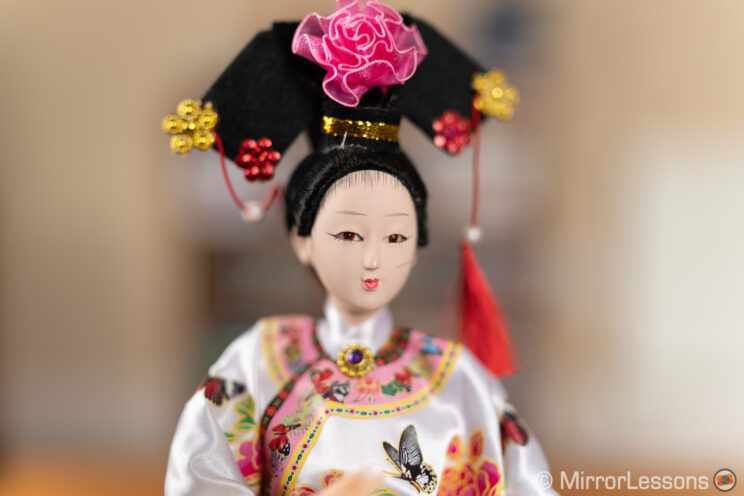
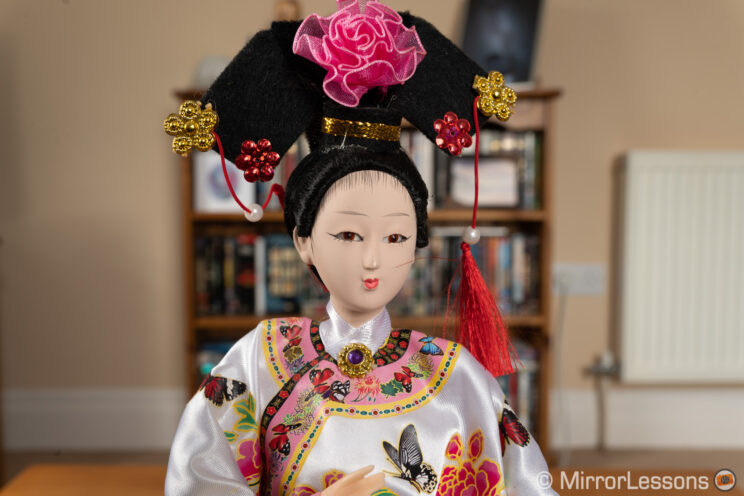
Sharpness
The ability of a lens to render tiny fine details in your image. Very often, sharpness peaks at the mid aperture values. Sharpness in the corners is often weaker than at the centre, especially when using wide apertures. The better a lens is from an optical point of view, the better it can render optimal sharpness across the frame and at any aperture.
Optical distortion
The ability of a lens to render lines as straight as possible, without making them appear bent or curvy. Many modern lenses have a small amount of distortion, but cameras can apply corrections automatically when generating the image.
With manual focus lenses that lack electronic contacts, this is not possible and you’ll have to deal with it in post (which is not always easy depending on the amount to correct). Note that this excludes perspective distortion, which is not an optical distortion but a natural effect when for example, you focus close to a subject with a wide-angle lens.
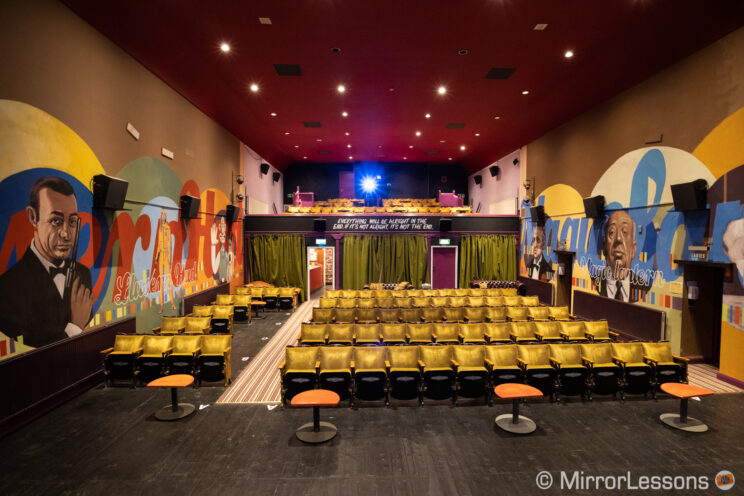
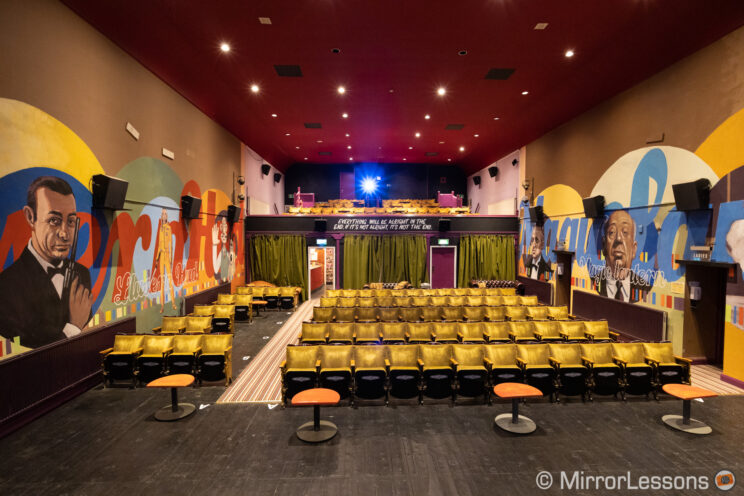
Vignetting
Also known as light fall-off, it is present when the corners of the image are darker than the centre. This happens especially with lenses that have a wide aperture like f/1.4. It usually disappears as you stop down (close the aperture). The intensity varies from lens to lens. Modern lenses correct this electronically with the camera. With other lenses you’ll have to do it yourself in post (which is usually easy to do unless the fall-off is really strong).
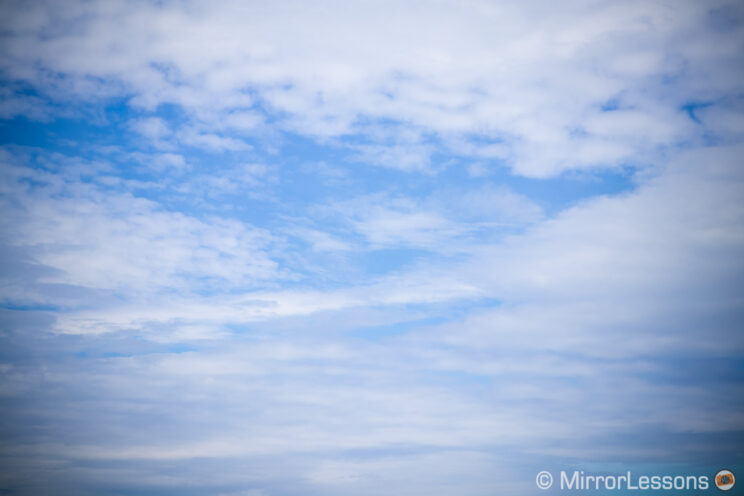
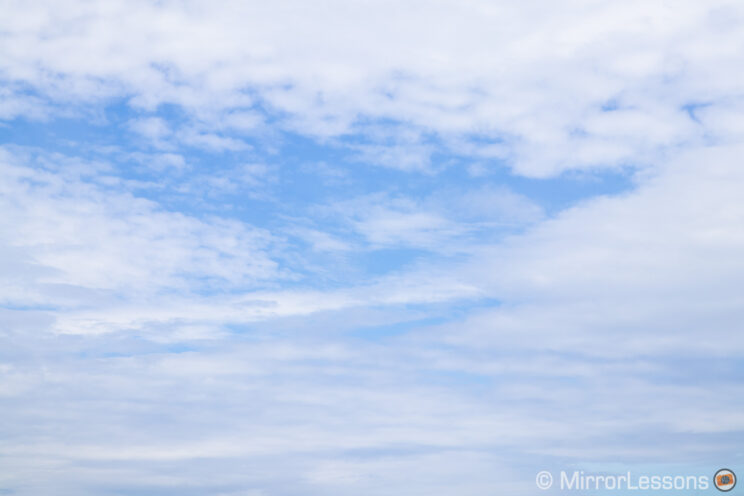
Chromatic aberration
Chromatic aberration occurs when the various wavelengths of colour don’t converge to the same focal plane. As a result, elements in your photo that have a clear contrast (ex. black text on white) can display coloured edges such as red or cyan, purple or green. Once again, modern lenses should correct it automatically via the camera software. Manual focus lenses often exhibit a certain amount, especially at fast apertures. It can be corrected in post but it’s not always easy to get rid of entirely.
RAW & JPG image files
The RAW file contains the unprocessed data captured by the sensor of your camera. It gives you more versatility in post to recover shadows, highlights, adjust the exposure or correct the white balance. It contains more information than the JPG file, which is a compressed image.
A JPG file will display the colours and contrast you selected in-camera via the Picture Style and other adjustments, whereas the RAW needs to be post processed on the computer to achieve the best result.
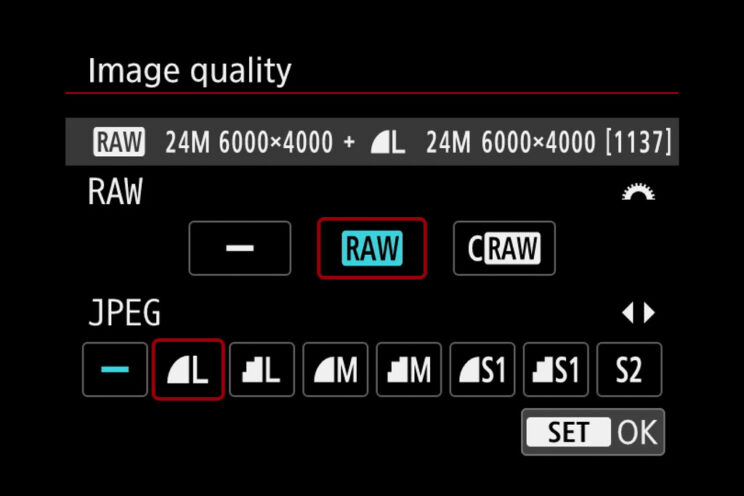
In-camera lens aberration correction
Your EOS M can correct lens aberrations such as vignetting, chromatic aberration and distortion, if the option is activated (Shooting Menu page 3). These affect the JPG file. If you shoot RAW, you will need to apply the lens profile in your photo editor software (some will do it automatically).
Even with these corrections activated, there might be some aberrations left (for example some vignetting with an aperture of F1.4). This is common with a lot of lenses for different systems. With manual focus lenses that lack electronic contacts, the in-camera corrections don’t apply.
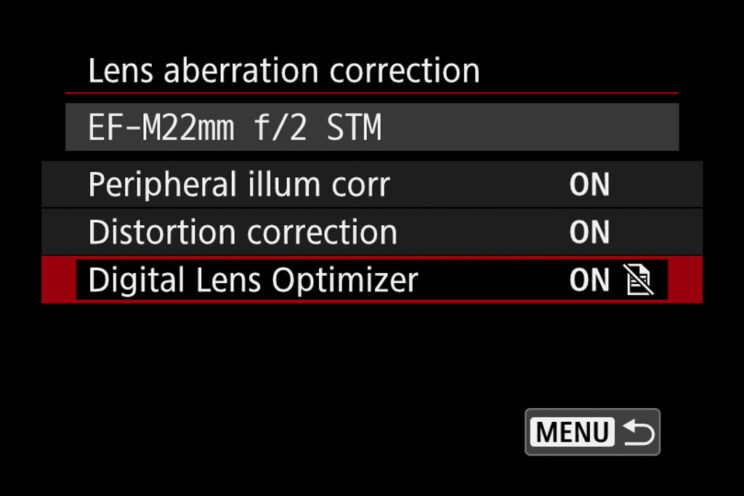
Focus breathing
This happens when you change focus from the minimum focus distance to infinity, and the field of view changes a little as a result (giving a small zoom effect). Some lenses don’t have any, others can suffer a lot from it.

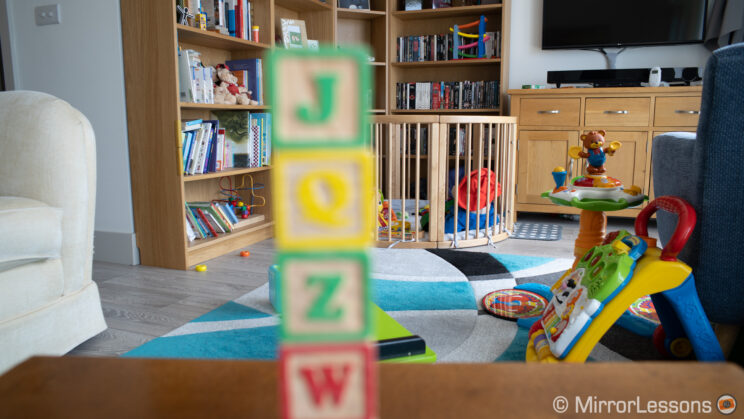
Digital IS
This is a function of your Canon Eos M camera that adds electronic stabilisation when recording video. There are two settings available (Enable and Enhanced). The field of view is cropped but you have better stabilisation as a result. It can work in tandem with the optical stabilisation of a lens (if there is any) or on its own, as long as the lens has electronic contacts.
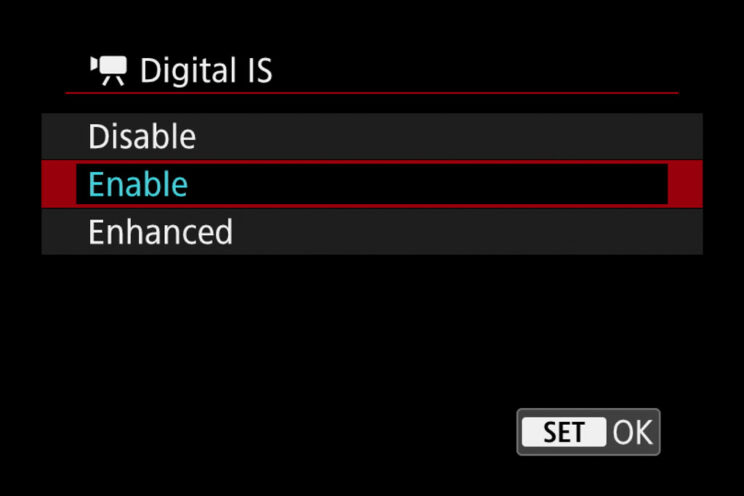
Bokeh
The characteristics of the out-of-focus areas produced by the lens in an image. The bokeh can be smooth and creamy, with soft and pleasant transitions, rounded and plain circles, or it can be nervous with hard edges, onion rings and other distracting elements that can detract the viewer’s attention from the main subject. It’s one of the main things photographers look for in a fast aperture lens.
Depth of field
It is the distance between the closest and farthest elements in your photograph that are in focus, or at least acceptably sharp. A large aperture of 1.4 produces a shallow depth of field; the distance is small and more elements are out of focus in the foreground and background. A small / slow aperture of f/8 will give you a deeper depth of field: the distance is longer and there are more elements in focus in the foreground and background.



